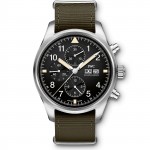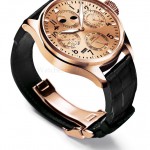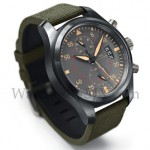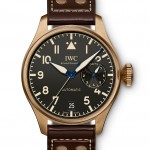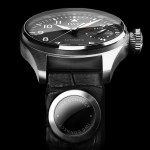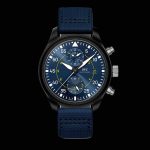Up Close: IWC Big Pilot Ref. 5003 “Markus Bühler”
The famed "turbine" watch.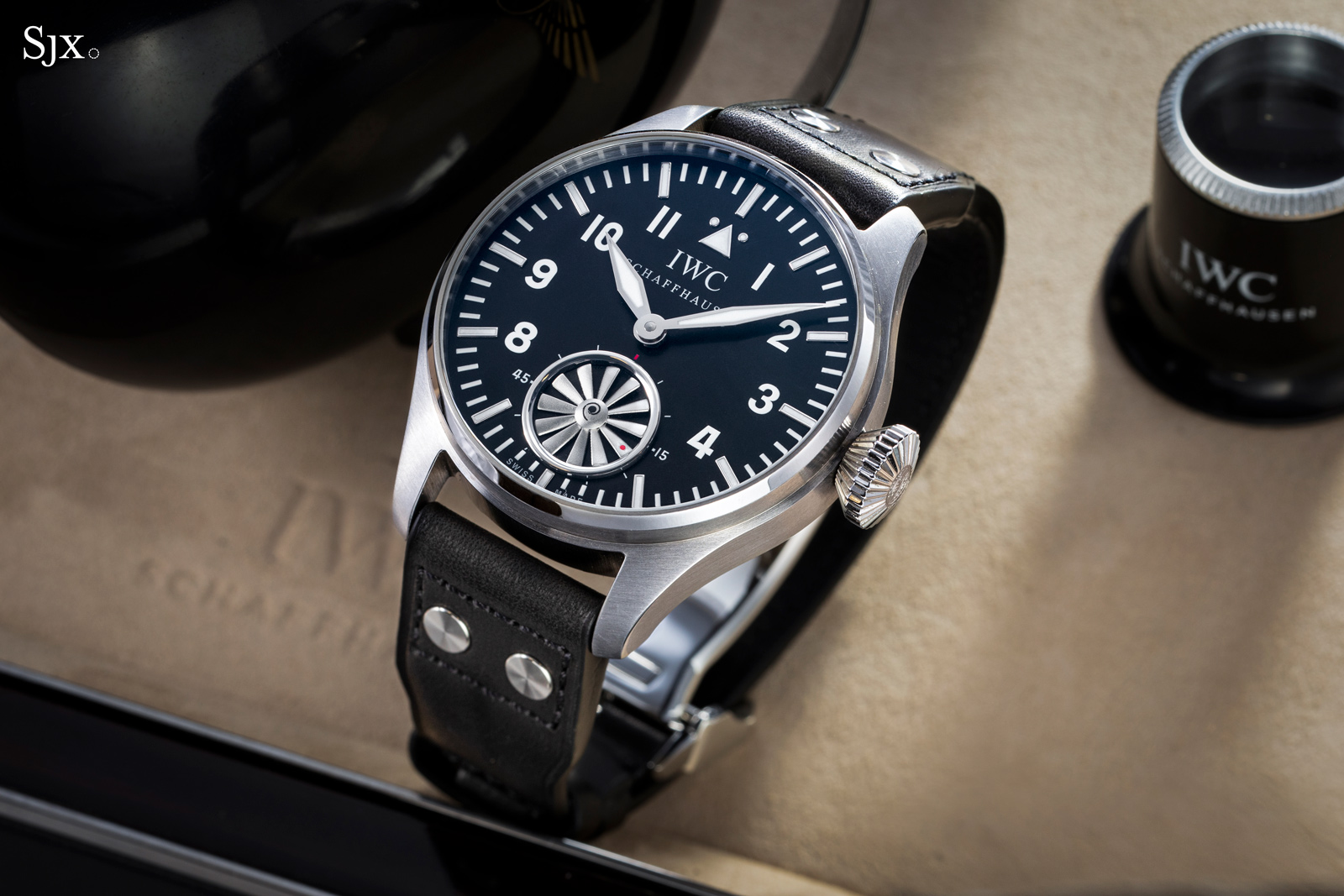
One of the most distinctive Big Pilot’s Watches IWC has ever made is also one of the least known – and even perhaps the rarest model ever. Named after its creator, the Big Pilot’s Watch Edition “Markus Bühler” ref. 5003 was conceived by a then apprentice at IWC and subsequently made it into production, but as a tiny limited edition of only a dozen watches.
The fundamentals of the Markus Bühler edition are simple – a gently-modified Unitas 6498 – but the look effectively conveys the purpose of design. With the “turbines” on the front and back, it is unmistakably a pilot’s watch.
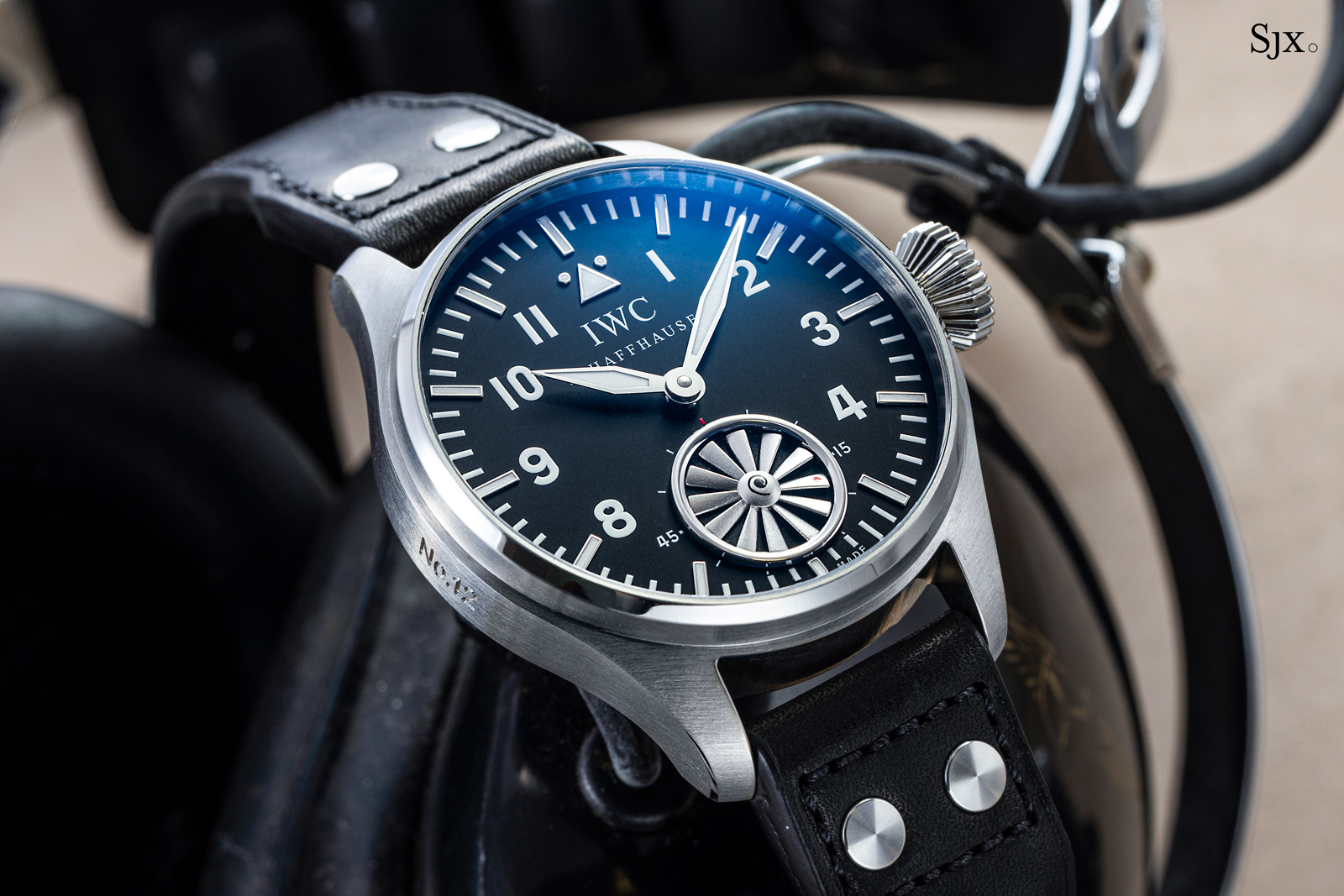
Initial thoughts
When I first saw the Big Pilot Markus Bühler at the time of its launch in 2008, I thought it was silly. Despite being a limited edition, the Big Pilot “Turbine” was a downgrade from the standard Big Pilot’s Watch, going from the impressive, in-house cal. 5000 with a seven-day power reserve to a Unitas, albeit one with unusual, asymmetric striping on the bridges.
But I was wrong. The simple yet effective concept – and its intrinsic aesthetic appeal – means the Markus Bühler has grown on me. I rank it amongst the most notable Big Pilots ever.
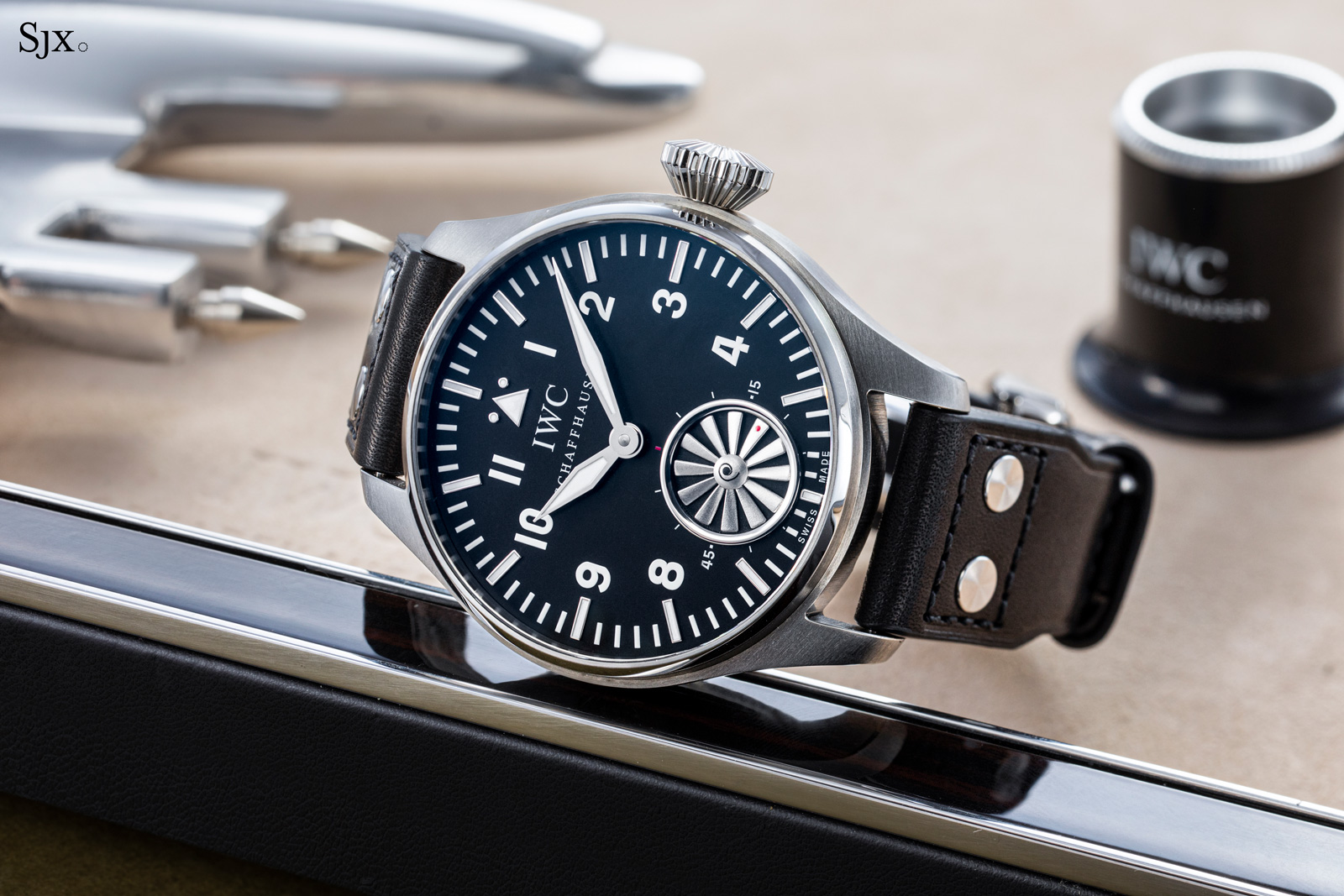
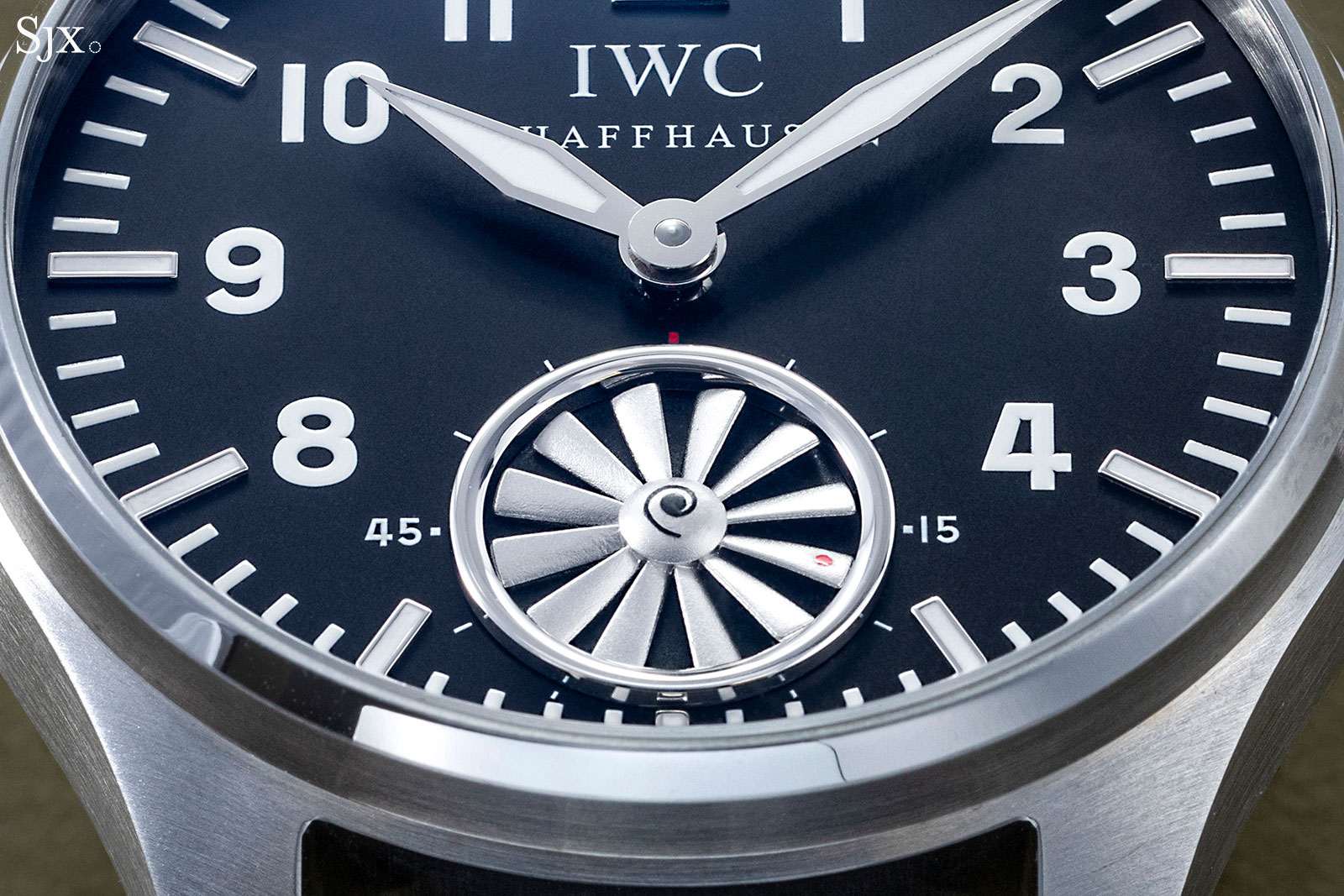
Its appeal lies in the fact that the design is straightforward and symmetrical, with minimal modification to the original Big Pilot dial, save for the seconds.
The dial design was the work of Gerd Plange, who’s been part of the IWC design team since 2001. During the period when he designed the “turbine” dial, Mr Plange was also responsible for several models in the now-discontinued GST line.
The “turbine” seconds is a distinctive, offbeat feature that proclaims it is a pilot’s watch, but in a reasonable and restrained manner. The turbine is not obvious at a distance, so avoids looking excessively pilot-y.
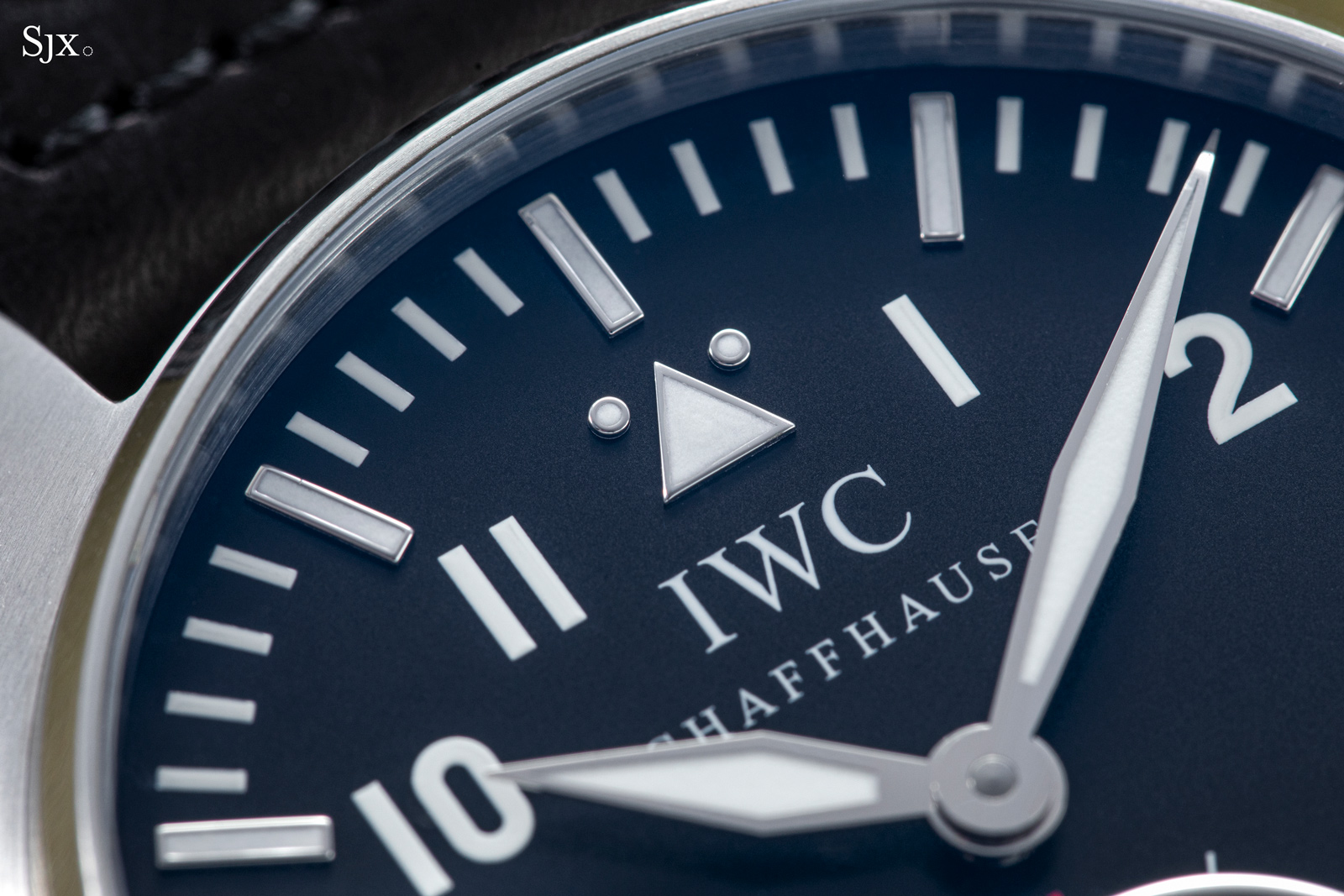
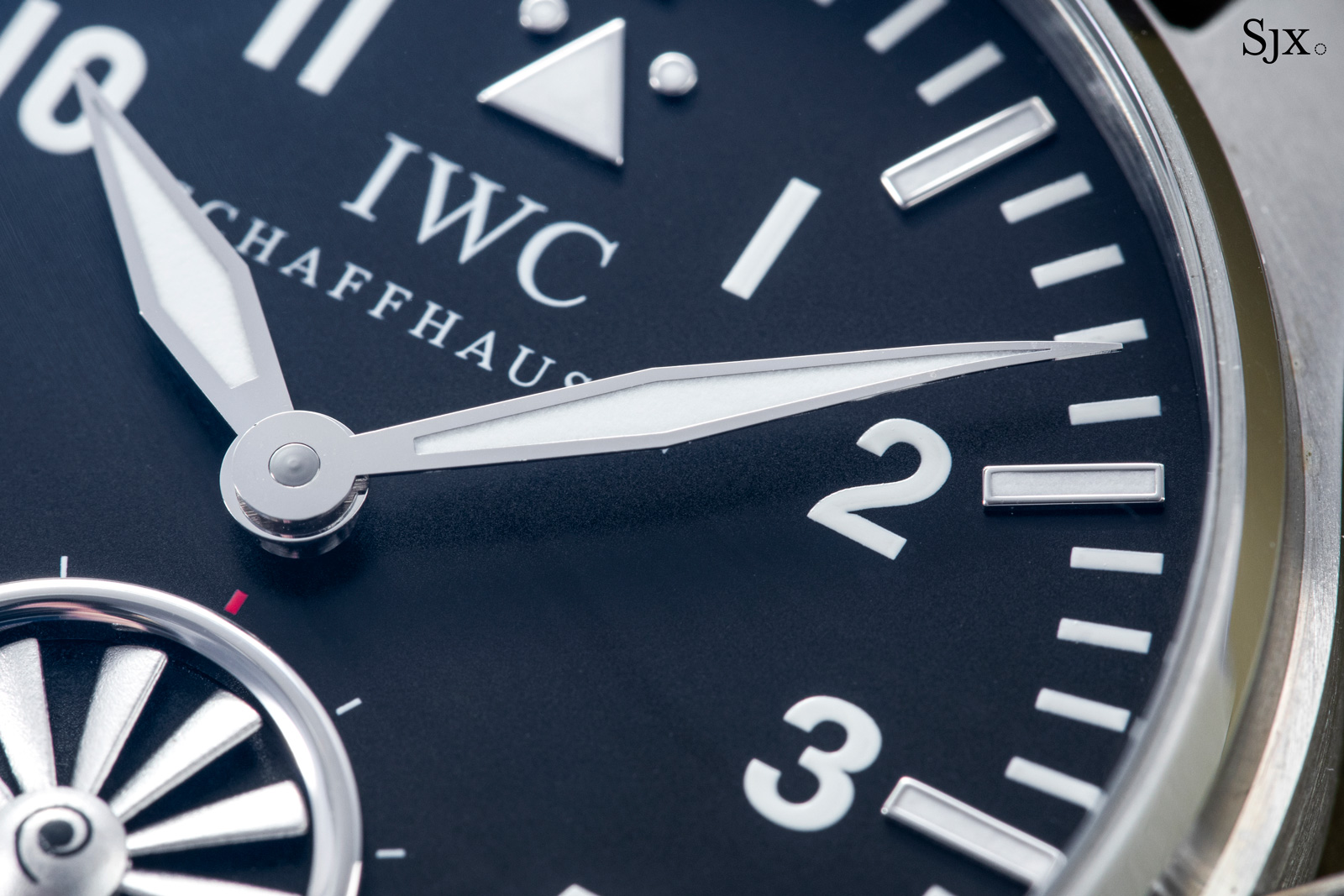
The movement within is indeed a low-cost Unitas, with minimal technical modification to boot.
But with high-spec in-house movements being commonplace now – even at lower price points thanks to brands like Tudor – they are no longer that exotic. Paradoxically that makes the unpretentious movement inside perfectly acceptable. And the fact that the movement was executed by apprentices at IWC overseen by Mr Bühler – giving it a strong school-watch vibe – adds to the appeal.
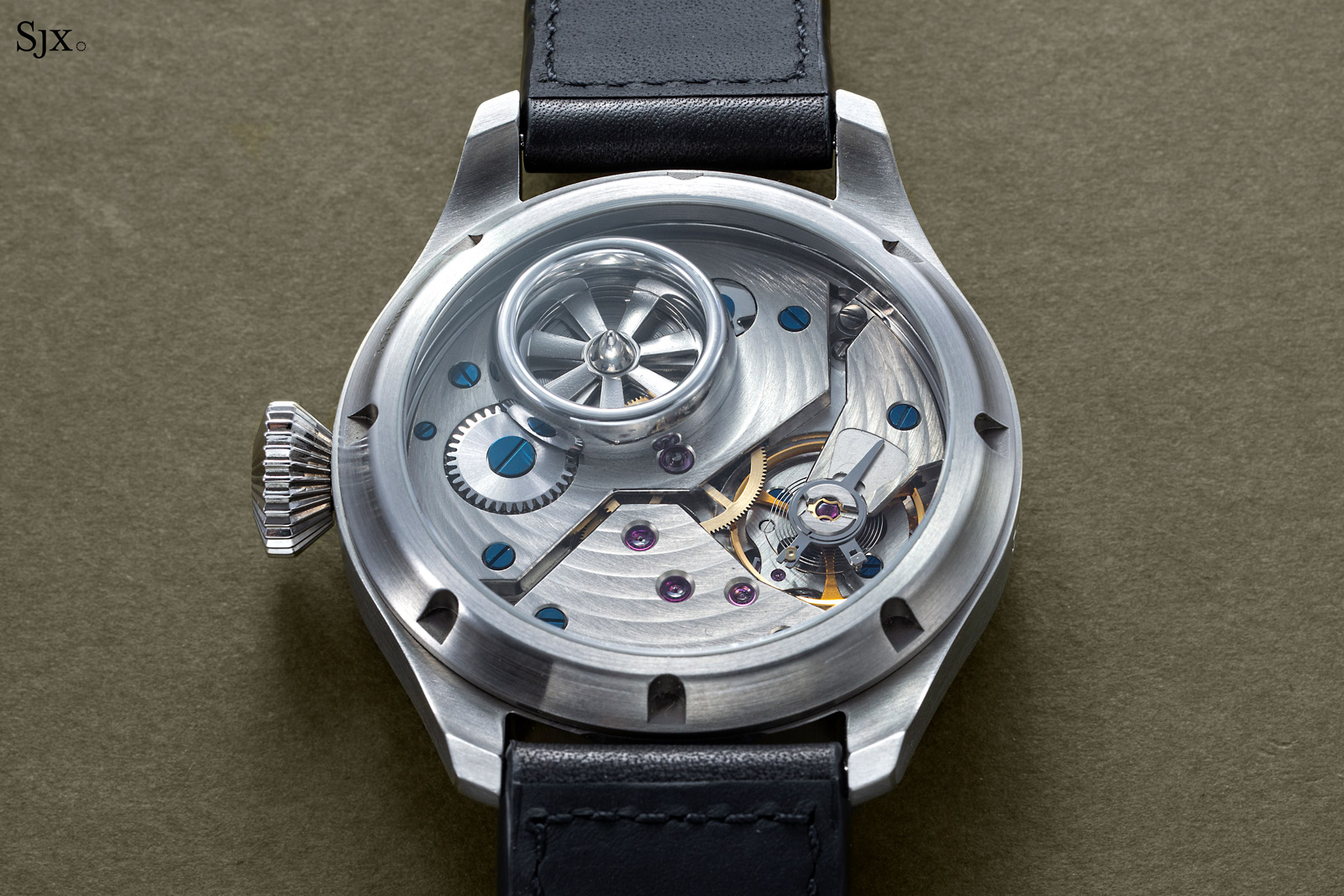
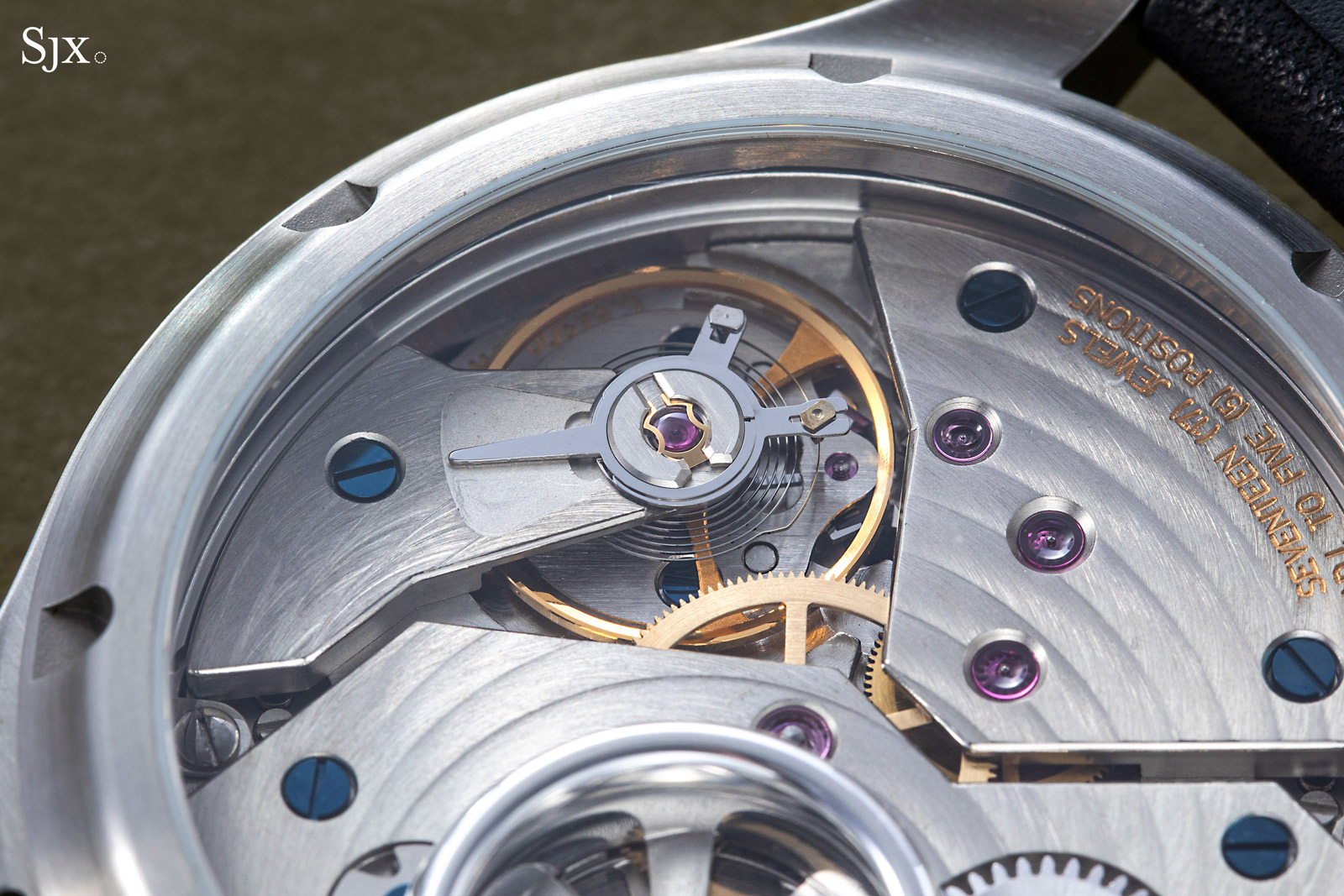
And of course it helps that only 12 of the Big Pilot Markus Bühler were made, making it truly rare. Owning one will no doubt feel like being part of a special club.
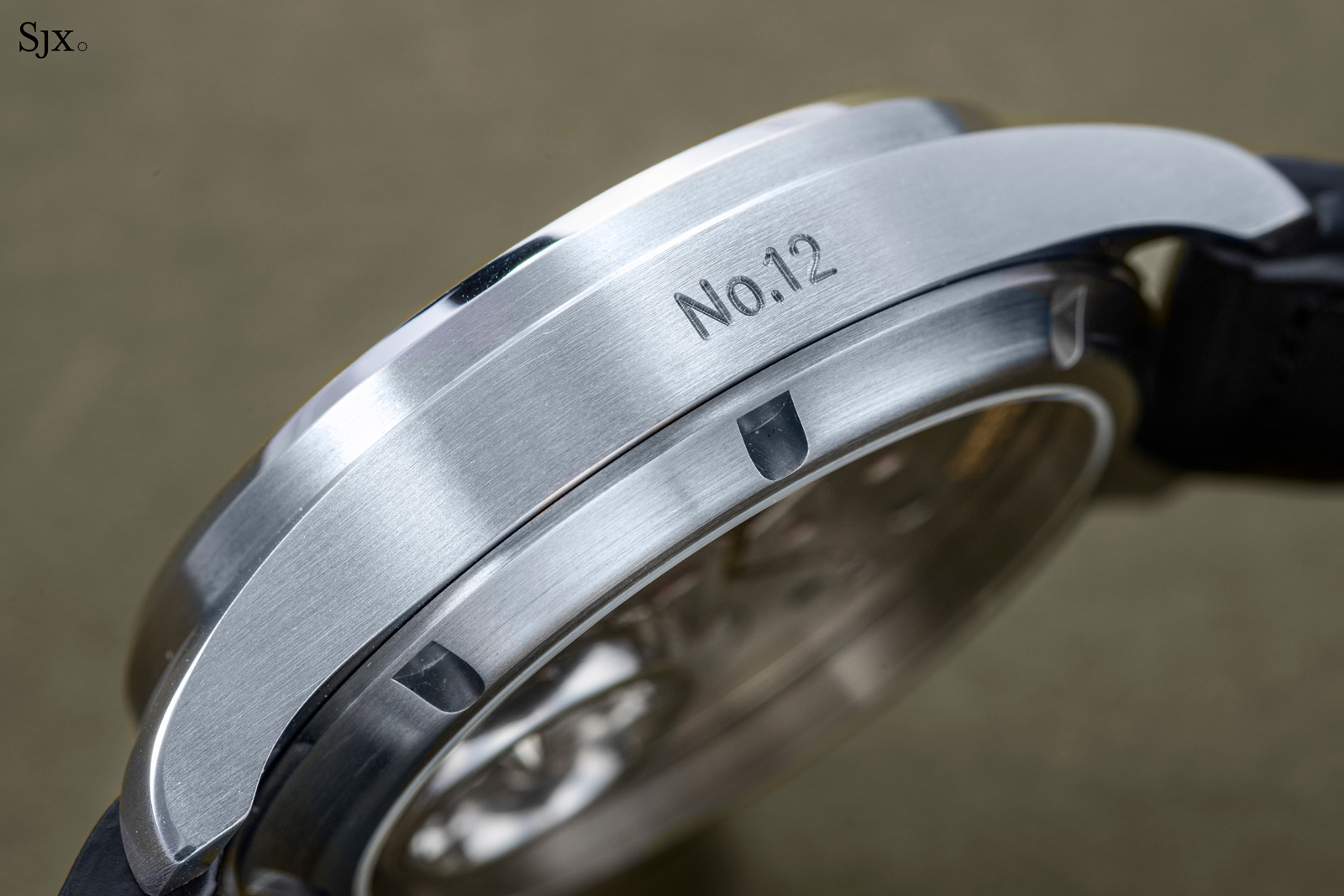
The example owned by the IWC Museum is the last of the edition
A prize winner
Now a two-decade veteran of IWC, Markus Bühler was born into a family of craftsmen. His first career was woodworking – he joined his family’s carpentry business right out of school and rose to foreman.
But after a decade, Mr Bühler decided a switch of careers was in order so in 2001 he joined IWC as an apprentice watchmaker aged 28. Despite not being his original vocation, watchmaking came naturally to Mr Bühler, who graduated as an apprentice with a final-examination score of 5.9 out of six.
He’s risen through the ranks of IWC and is today Associate Director, Watch & Movement Assembly, but to IWC enthusiasts he will forever be synonymous with the Big Pilot that bears his name.
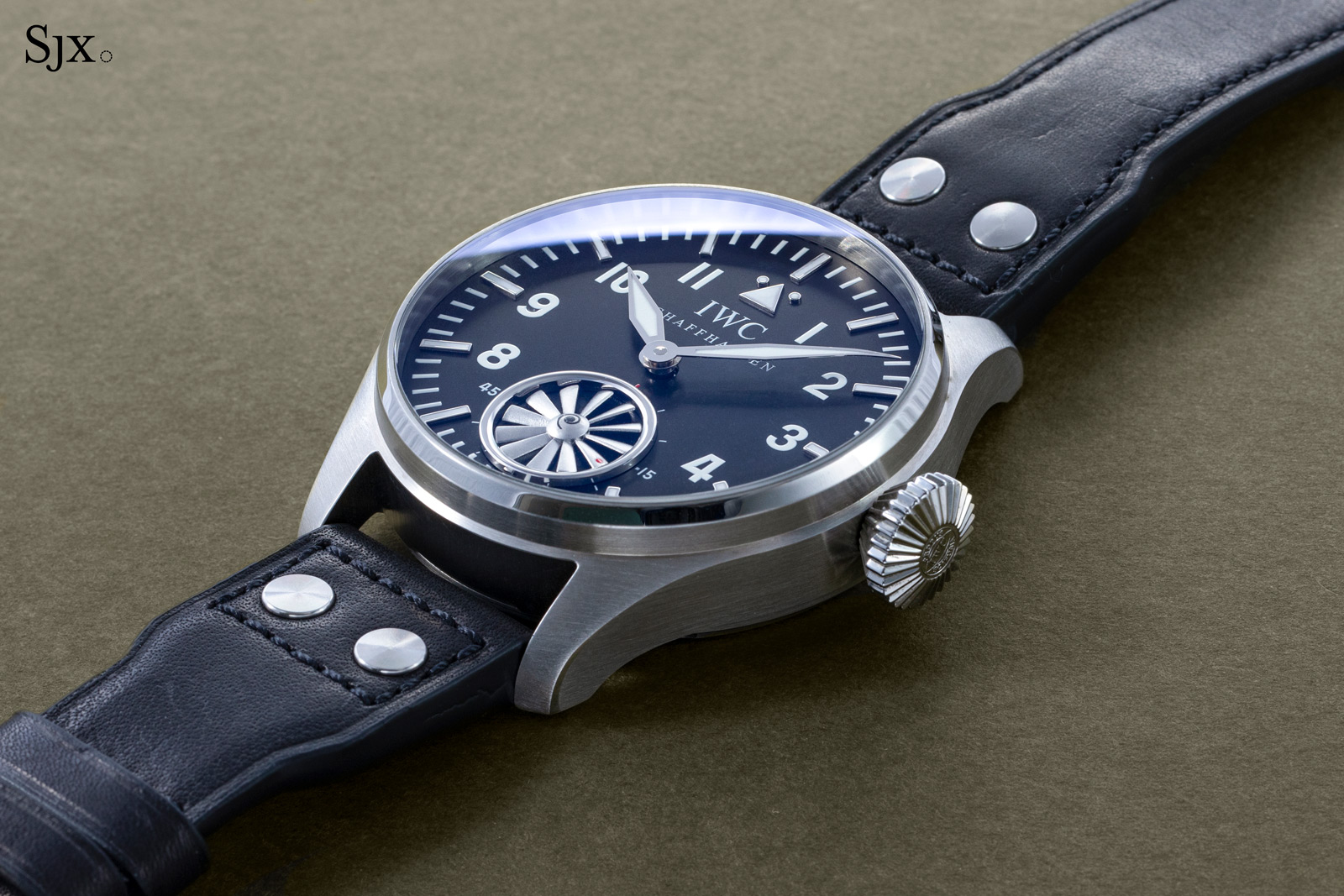
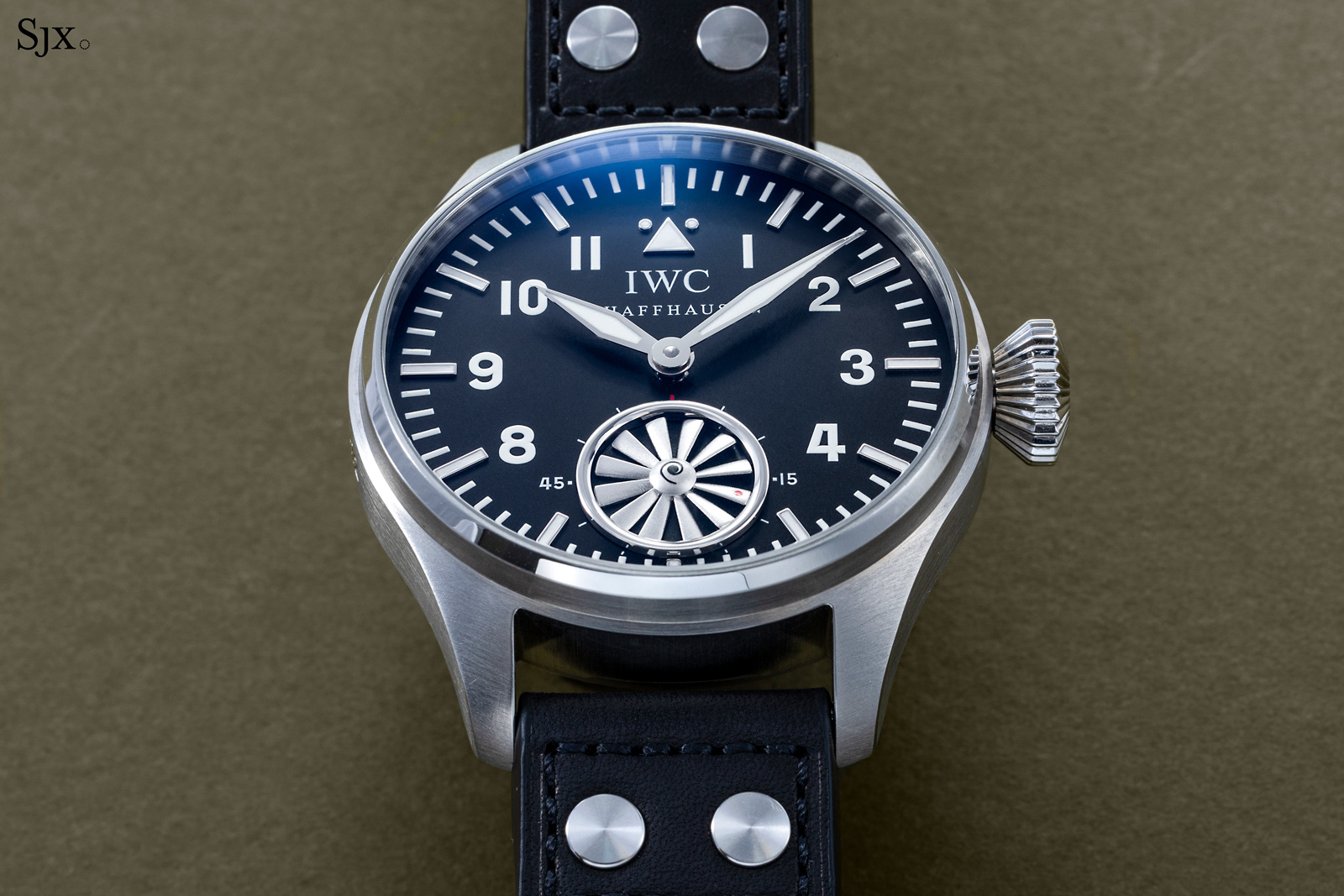
Mr Bühler conceived “turbine” watch as his entry for the 2003 Prix IFHH de l’Horlogerie, a contest for apprentice watchmakers in Switzerland.
It was once an annual affair organised by the Institut de Formation à la Haute Horlogerie (IFHH), an organisation established by IWC’s parent company, Swiss luxury group Richemont, to educate group employees in haute horlogerie. A couple of years later, the contest was merged with Cartier’s apprentice competition and is now known as the Concours IHC (short for Institut Horlogerie Cartier).
Sixty-four apprentice watchmakers took part in the 2003 contest, and Mr Bühler emerged victorious with the highest score of the competition – 44 points out of 50 – winning him the top prize as well as a trip to New York.
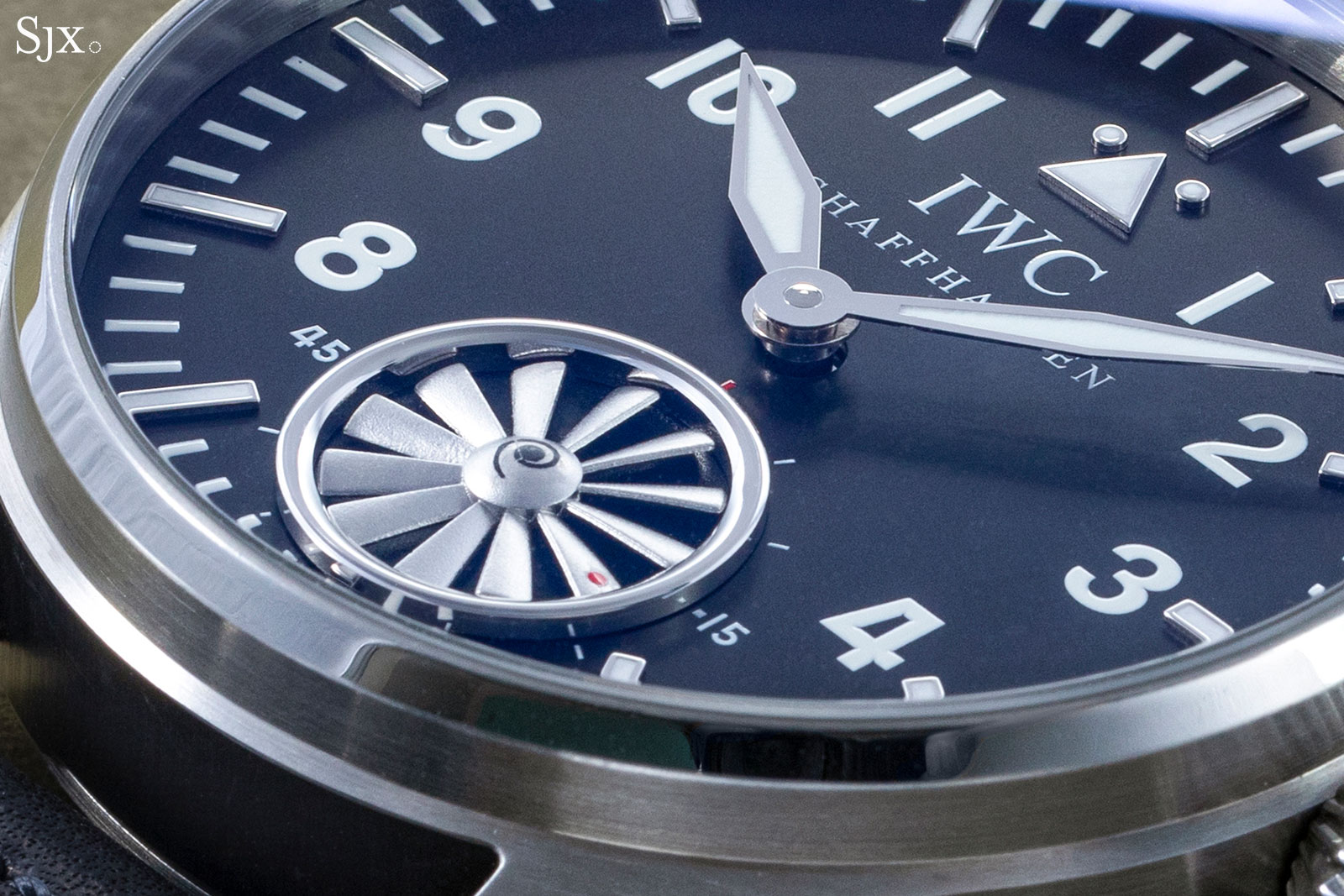
His winning entry was devised and realised within the timeframe dictated by the contest rules – 30 hours over two weeks – so it is unsurprisingly simple, but still clever.
It’s essentially a hand-wind, pocket-watch movement modified to incorporate turbine-shaped wheels on both the front and back, which replace the seconds hand and barrel ratchet wheel respectively.
Commenting in the announcement for the subsequent limited edition, Mr Bühler explained, “Replacing the spring barrel of a watch with the miniature turbine engine of a passenger aircraft appears to be a bold idea on first inspection… yet both engines perform the same task. They are responsible for providing the drive.”
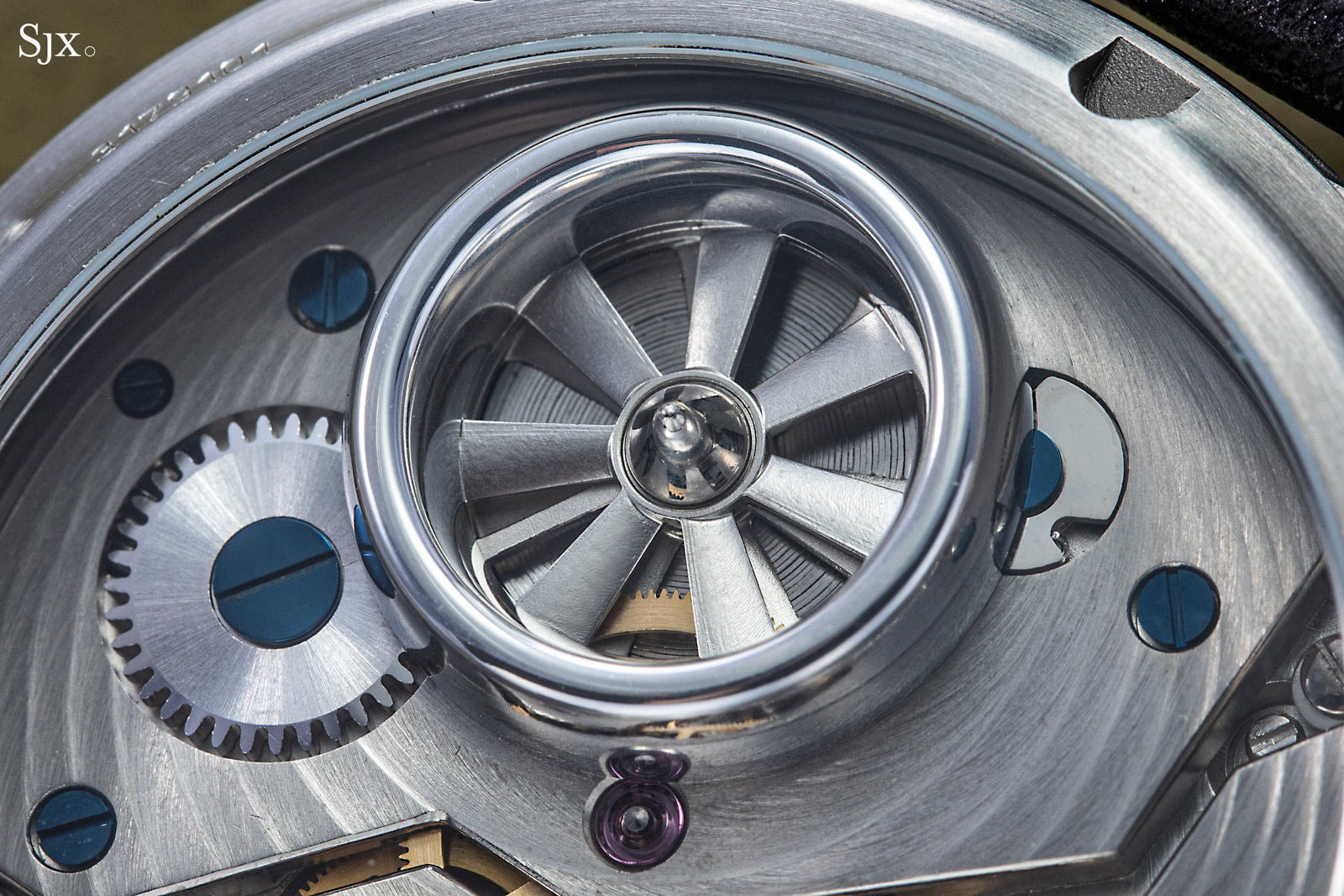
One dozen special watches
With his skills in building one-off watches proven, Mr Bühler was posted to IWC’s prototyping department upon passing his apprenticeship in 2004. During that time, it was decided that the “turbine” watch – which became what would have been a trending topic on social media today – would be put into serial production as a limited edition, albeit in a tiny run of just 12 watches.
Mr Bühler thus became the project manager for his own limited edition and in a poetic reversal of roles, a team of apprentices was assigned to him for the 12-watch project. Mr Bühler and his young charges had to develop the tooling required to make the parts unique to the Big Pilot “Turbine”, namely the open-worked wheels – each of which was cast by hand in aluminium.
The artisanal, one-off nature of the Big Pilot “Turbine” means each of the 12 “turbine” movements are actually more akin to hand-made prototypes than ordinary IWC calibres. And for that reason, the 12 watches took a surprisingly long time to complete, with the 11 lucky owners only receiving them in 2008.
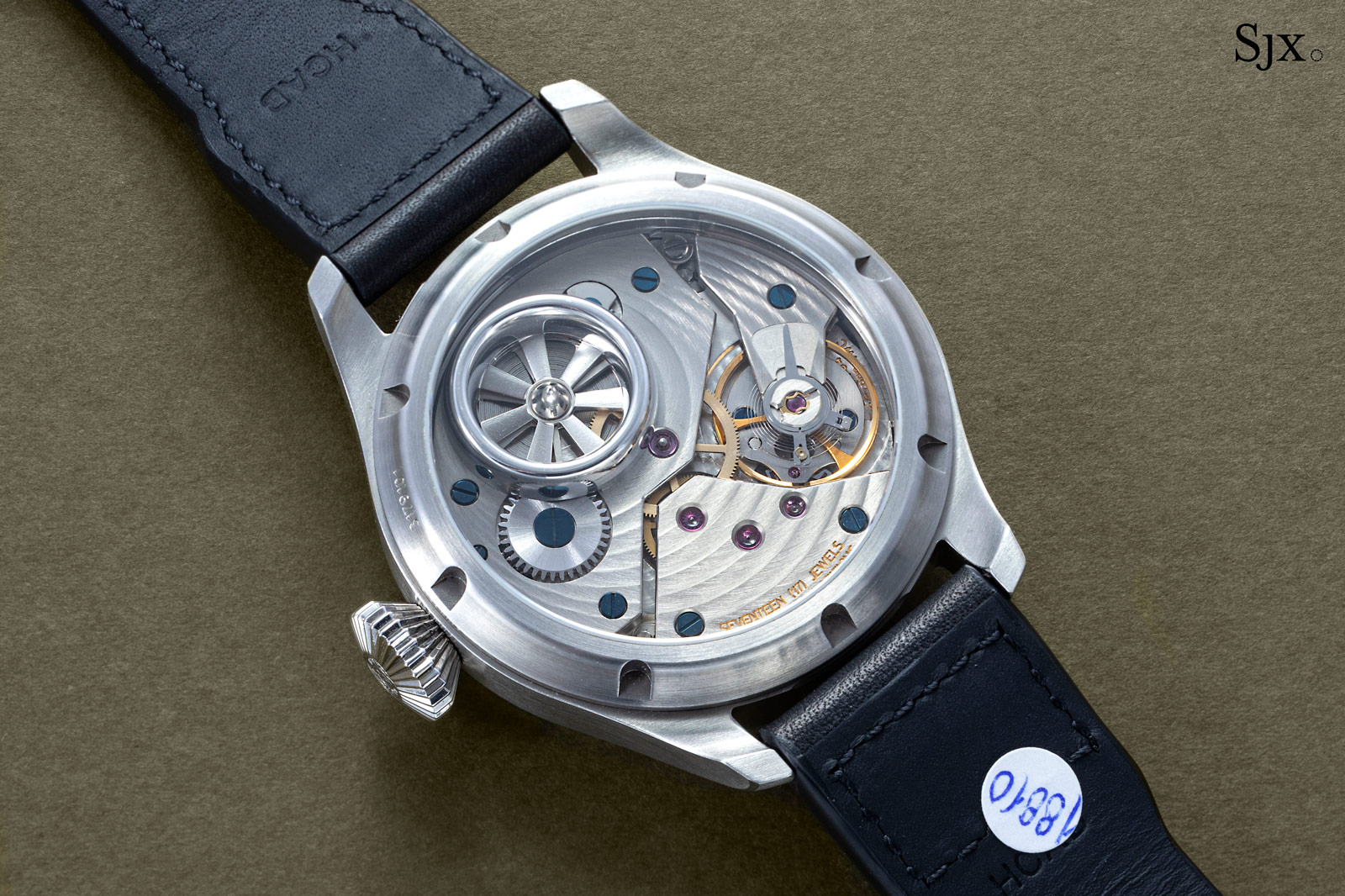
The finishing on the bridges was certainly artisanal, being the work of Mr Bühler – he completed the striping on the bridges for the dozen watches.
While conventional Côtes circulaire (essentially Côtes de Genève that’s concentric instead of parallel and linear) is symmetrical and radiates outwards from the centre of the movement, Mr Bühler decided to relocate the starting point of the pattern to the barrel ratchet. As a result, the decoration radiates outwards from the “turbine”, evoking the compressed air that blasts out from a jet turbine.
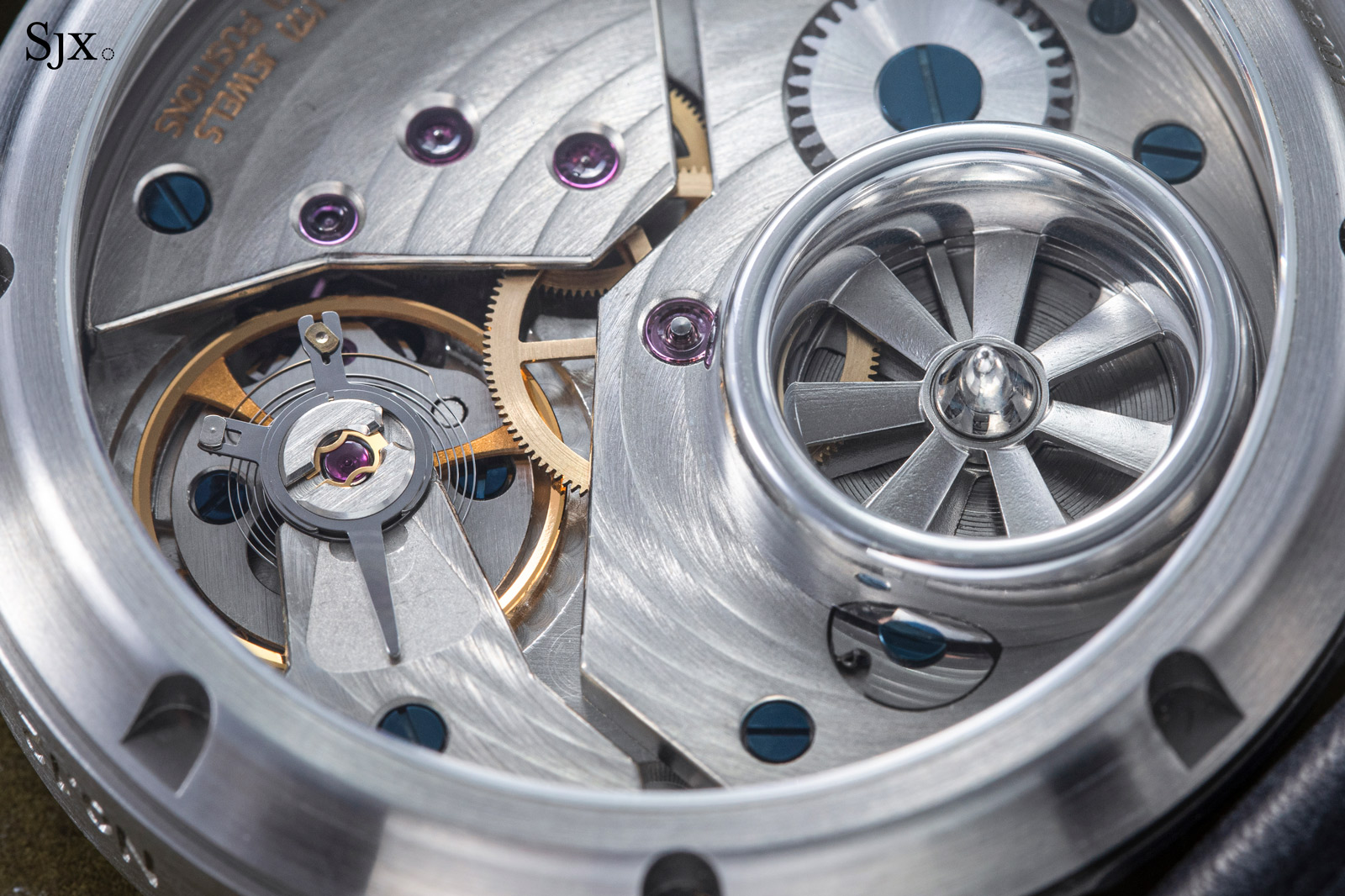
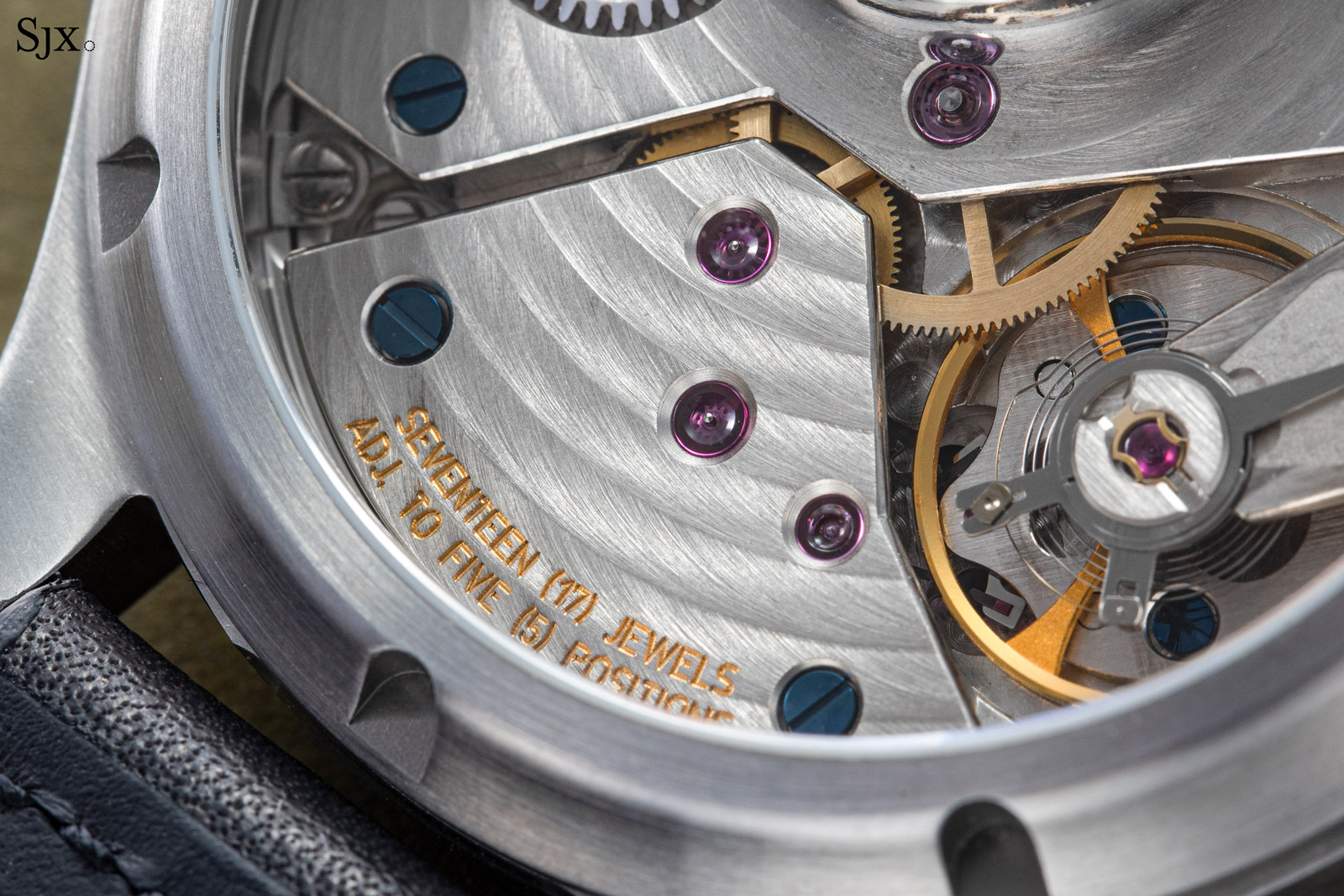
Twin turbines
The front “turbine” is a straightforward modification – the seconds indicator takes the form of a turbine. A tiny red dot on one of the blades functions as the hand, read in tandem with a track graduated in five-second segments on the outer edge of the register.
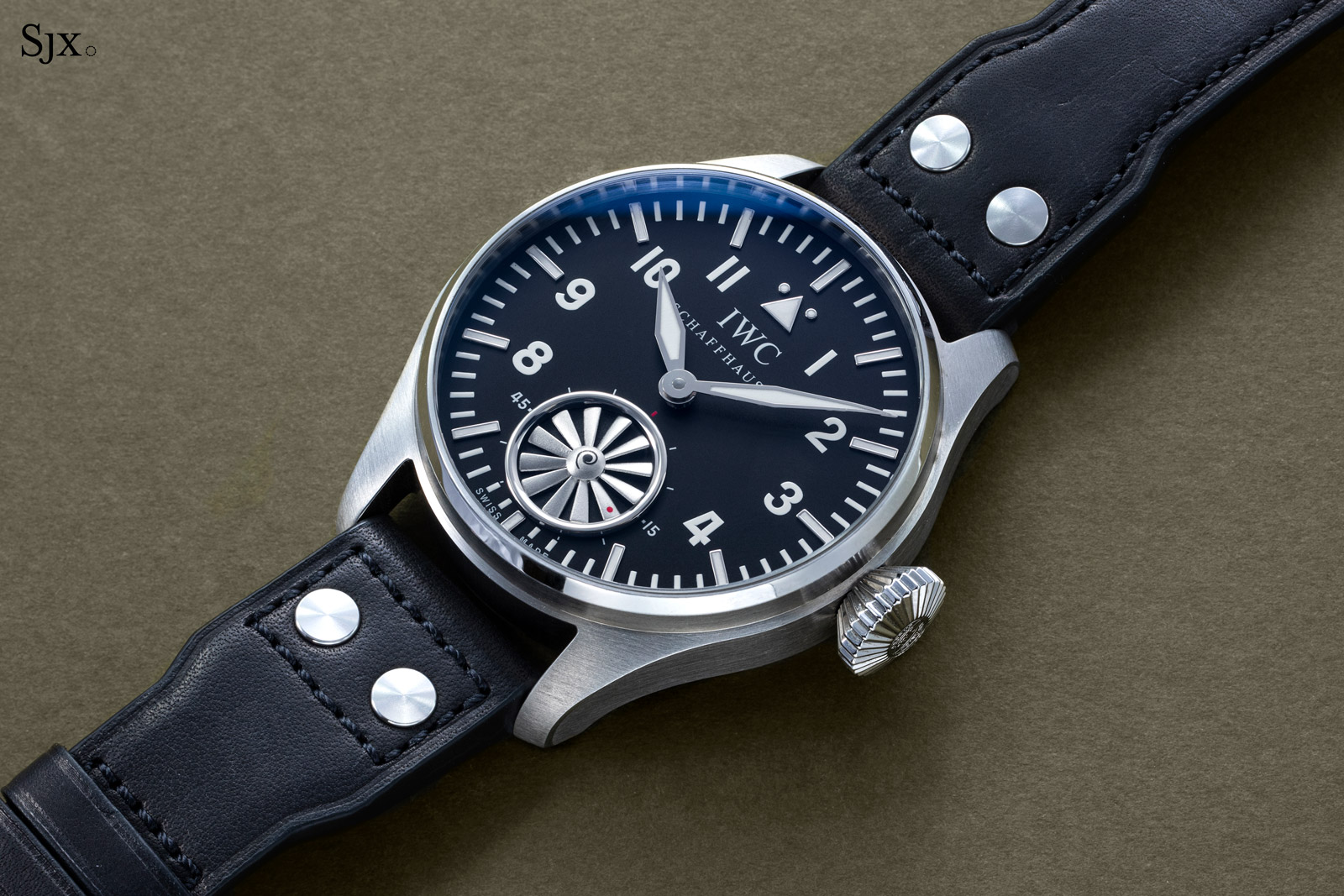
To prevent the seconds indicator becoming a drag on the movement (and causing a drop in the amplitude of the balance), it had to be as lightweight as possible. So the indicator was cast in aluminium, which is about a third as dense as stainless steel or bronze, the conventional metals for hands.
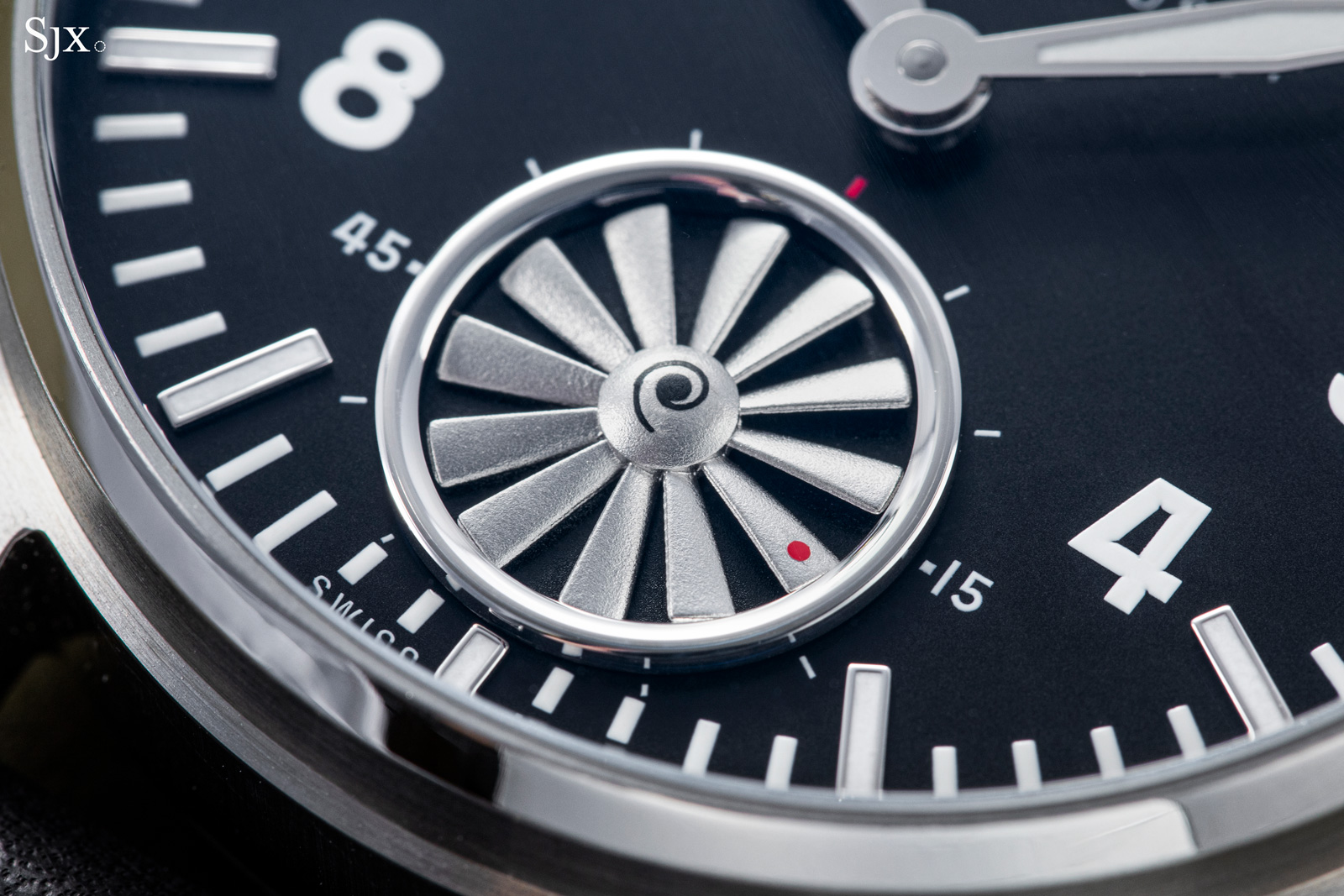
Composed of two primary elements, the turbine on the reverse is slightly more complex. The first component is the fixed ring with a raised lip – the lip is meant to mimic a jet engine’s inlet cowl – with integral, fixed blades and an exhaust cone at their centre.
Just below that is the barrel ratchet wheel that’s been open worked to form turbine blades. This wheel rotates when the movement is wound.
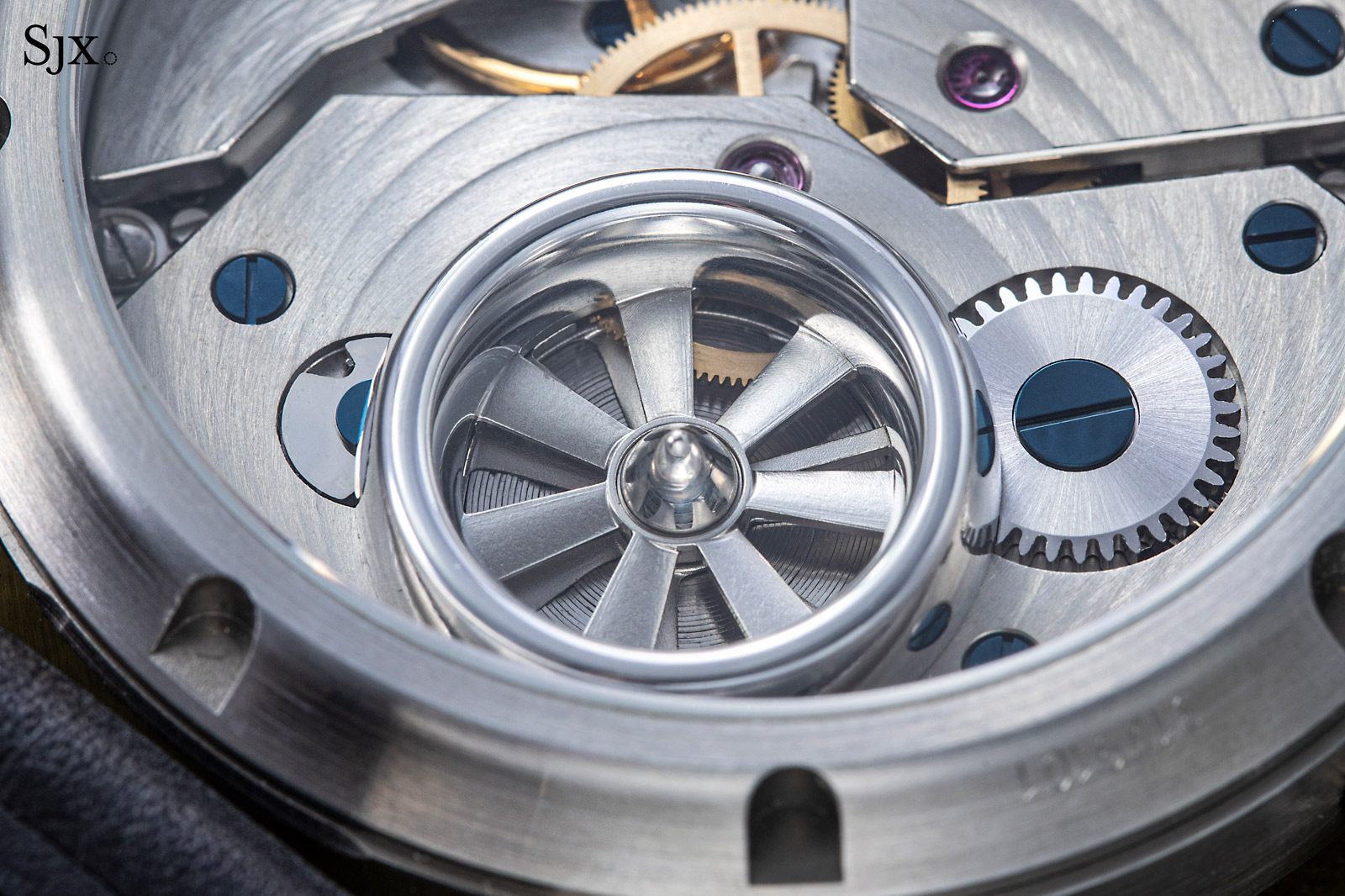
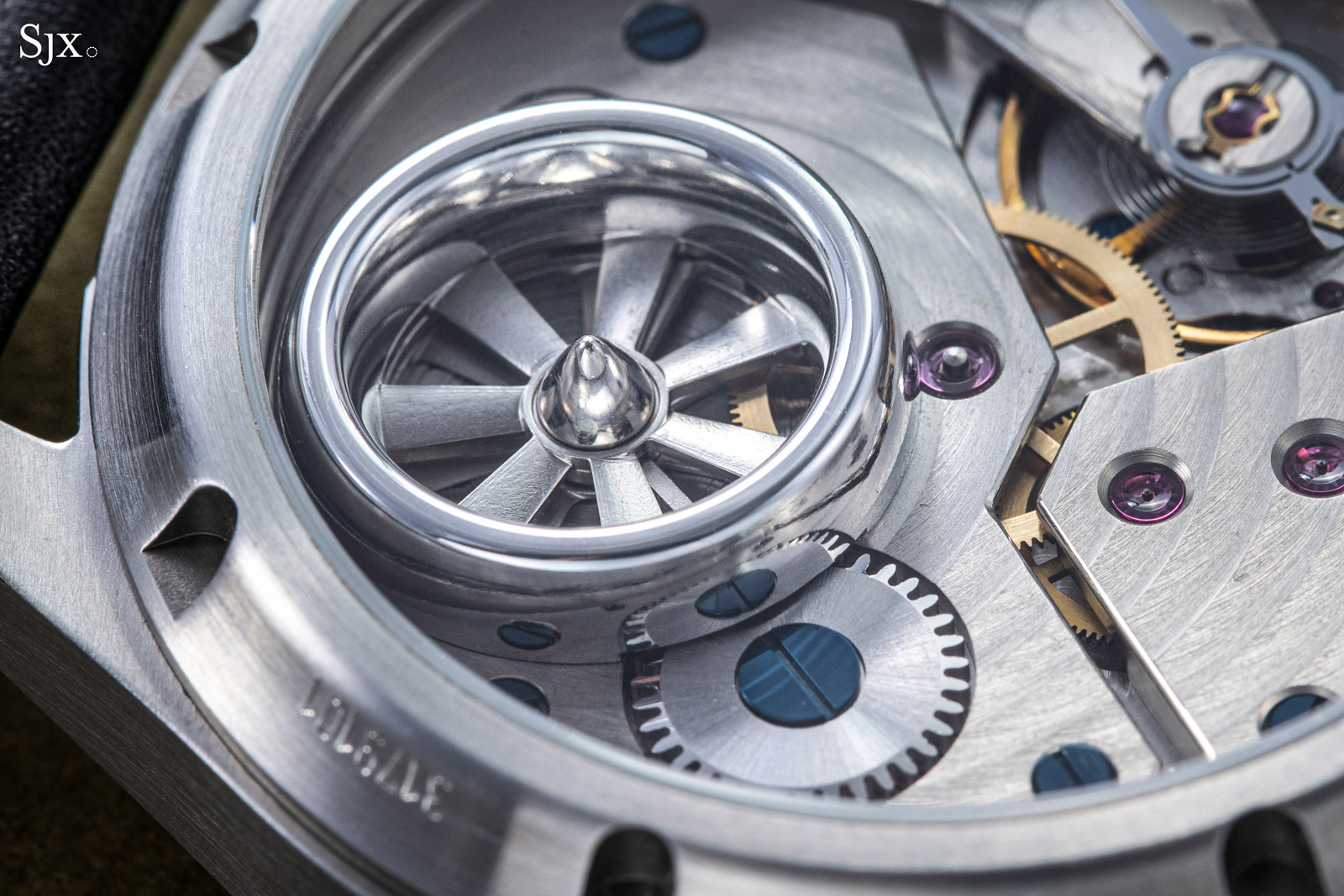
Because of the raised lip around the “turbine”, the case back is noticeably taller than the movement in order to accommodate it under the crystal
Beyond the turbine barrel cover, the movement is an ordinary Unitas, albeit one that’s been attractively finished to a far higher level than is the norm for the movement, which was historically found in inexpensive watches. The finishing is solid and workmanlike, similar to what one might find on a school watch, which is very much what this is since the 12 pieces were completed by apprentices.
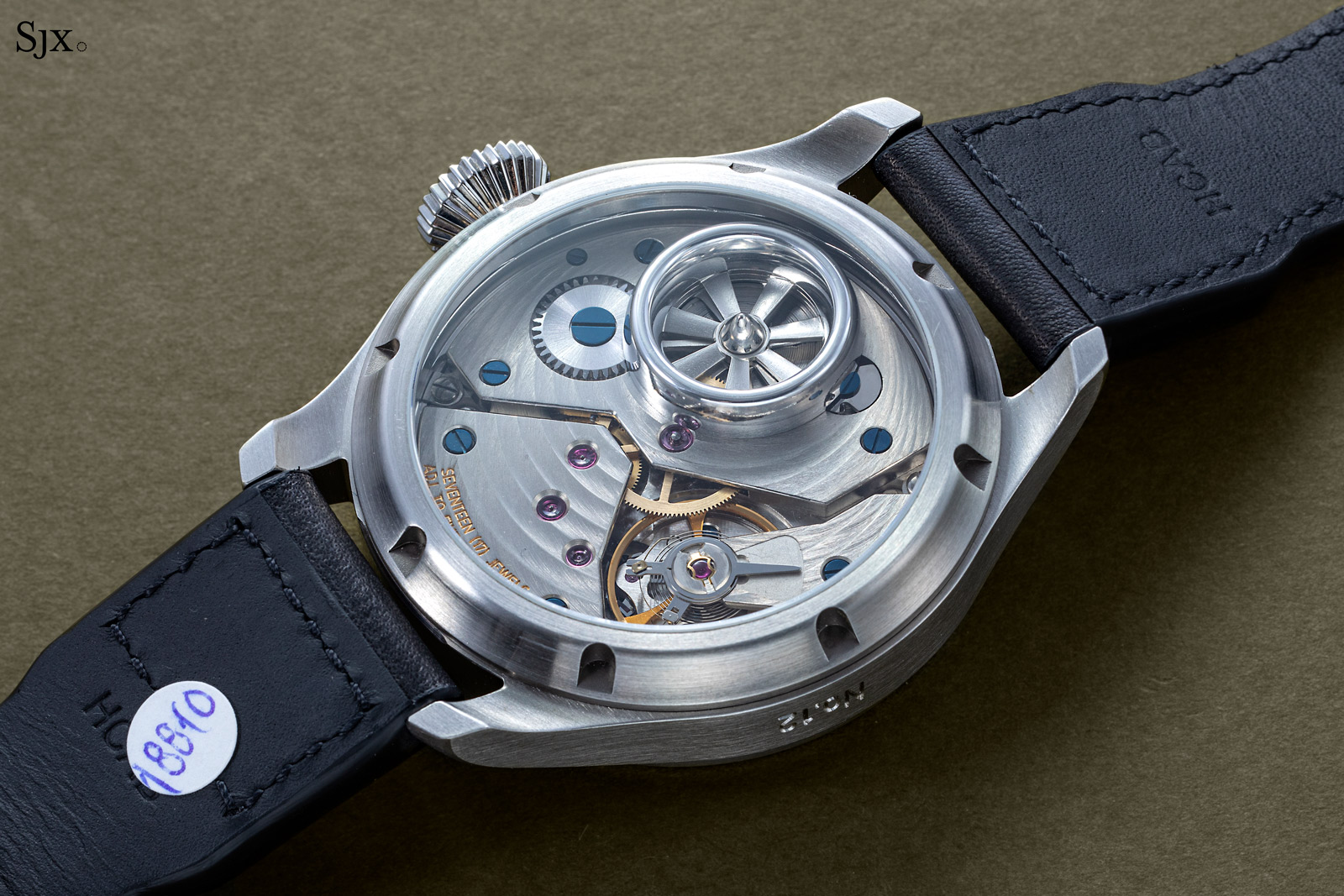
Aside from Mr Bühler’s own asymmetric Côtes circulaire – which is perhaps the finest element of the decoration – the bridges also feature polished bevels on their edges and milled countersinks. All the screws are heat blued and the gilded wheels of the going train are finished with circular graining instead of the low-cost tumble polishing found on the stock version of the movement.
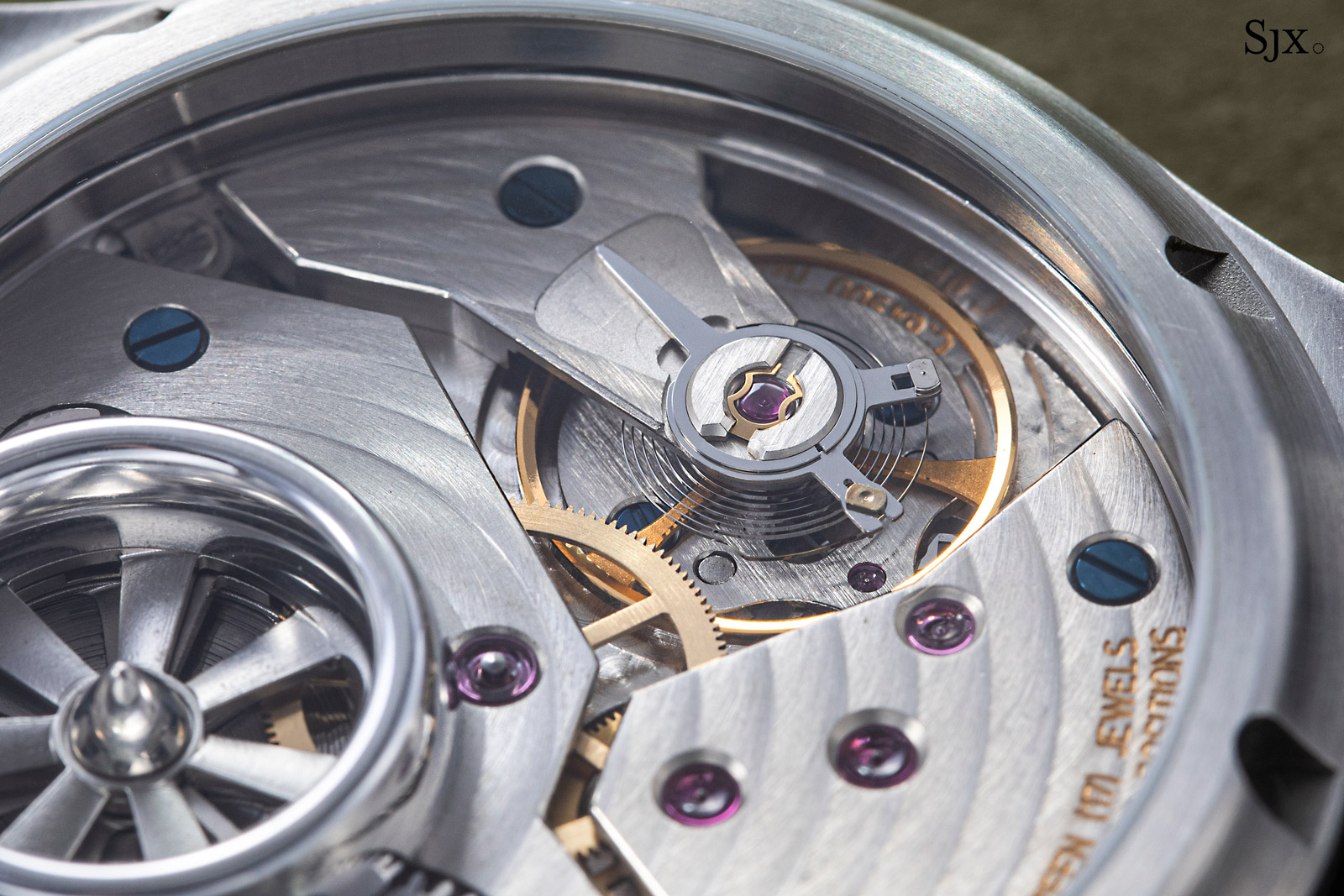
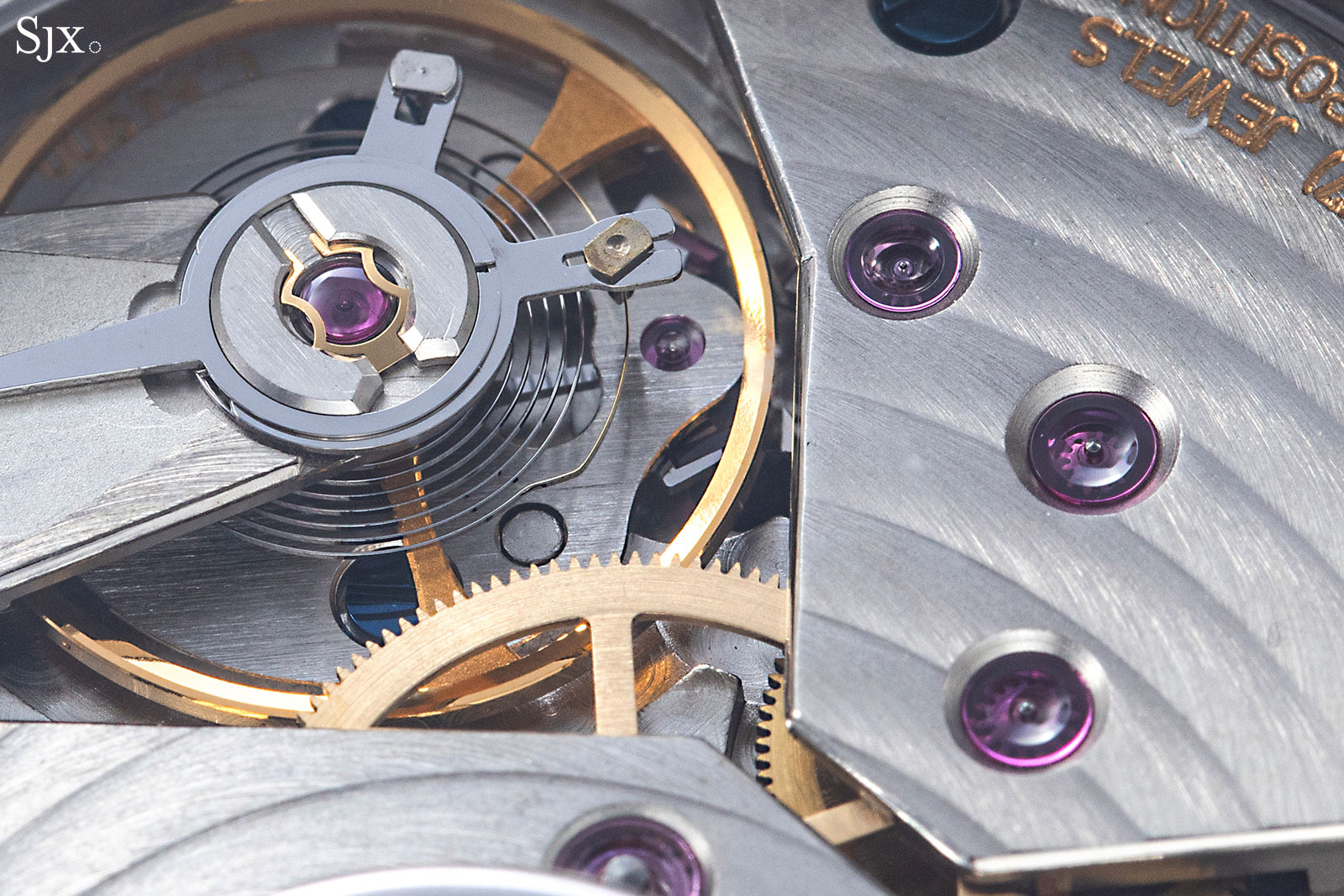
The bevelling on the bridges was evidently done by hand, being slightly rounded and polished, while the countersinks for the jewels and screws were clearly done by machine, leaving visible milling marks
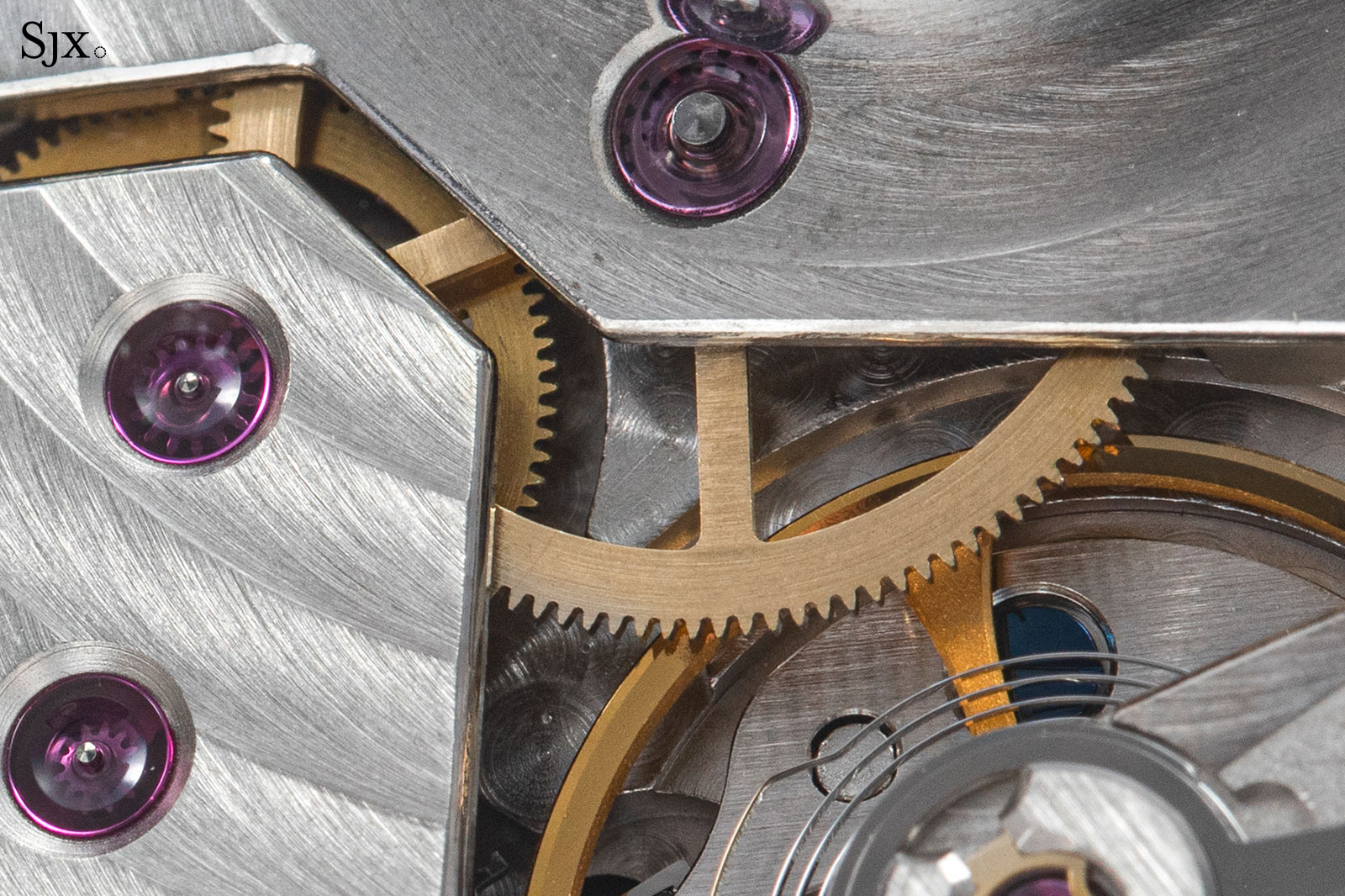
The circular graining on the going train wheels and the finely-applied circular striping on the bridges
The rest of the watch is pretty much standard issue Big Pilot.
The case dimensions are identical the first-generation Big Pilot ref. 5002, though its water resistance is 30 m compared to 60 m for the ref. 5002 because of the non-screw down crown, a necessary convenience since the movement is hand-wind.
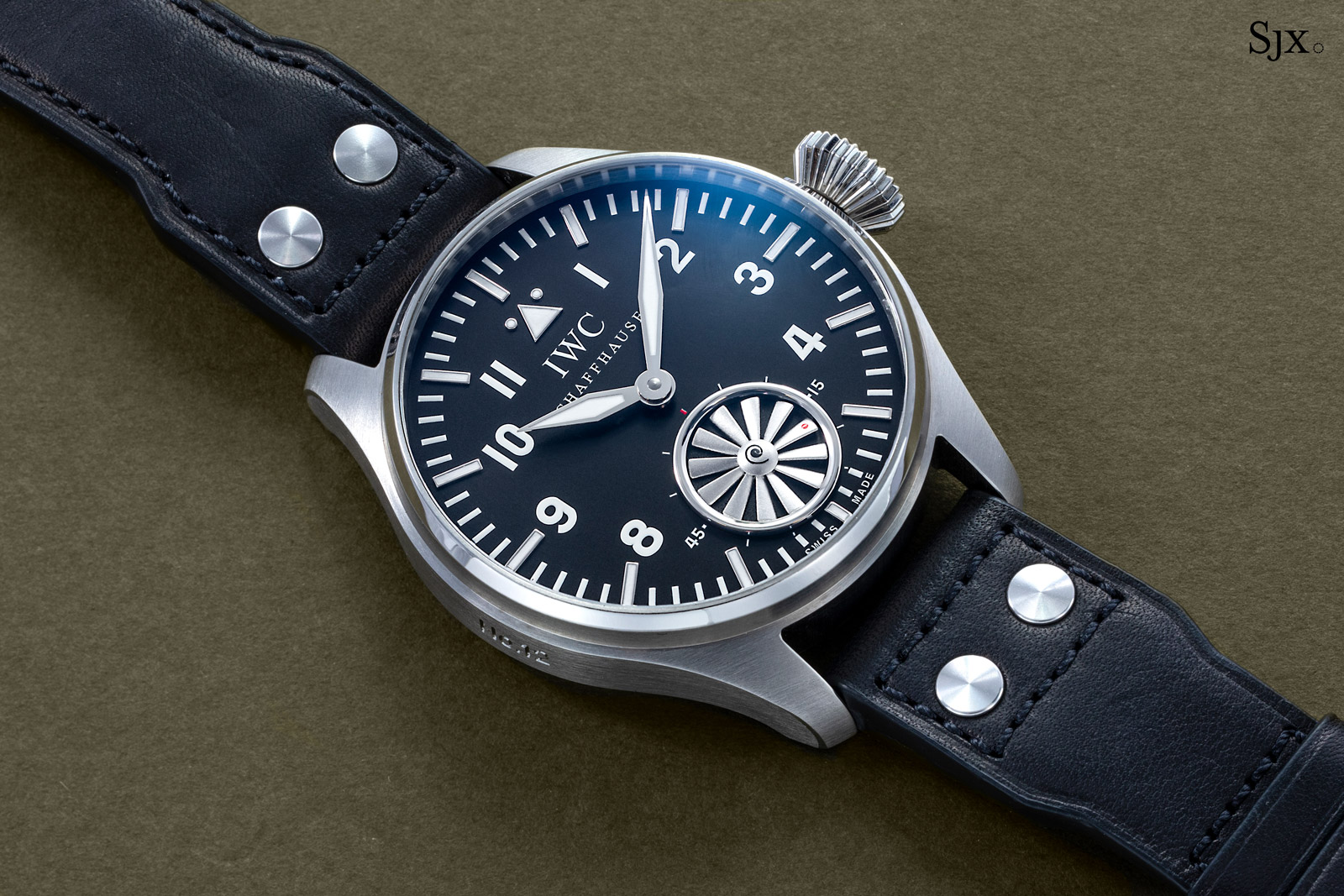
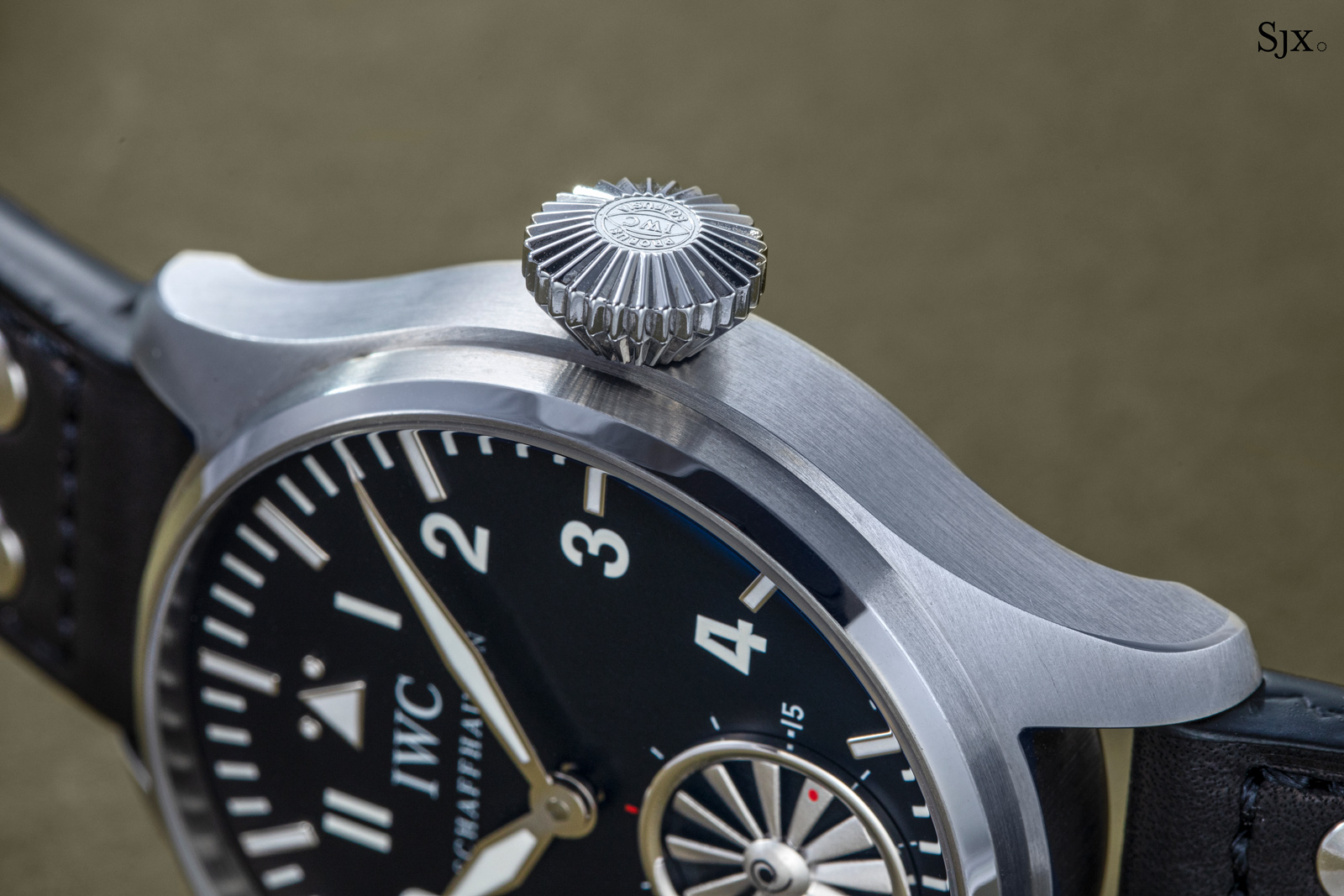
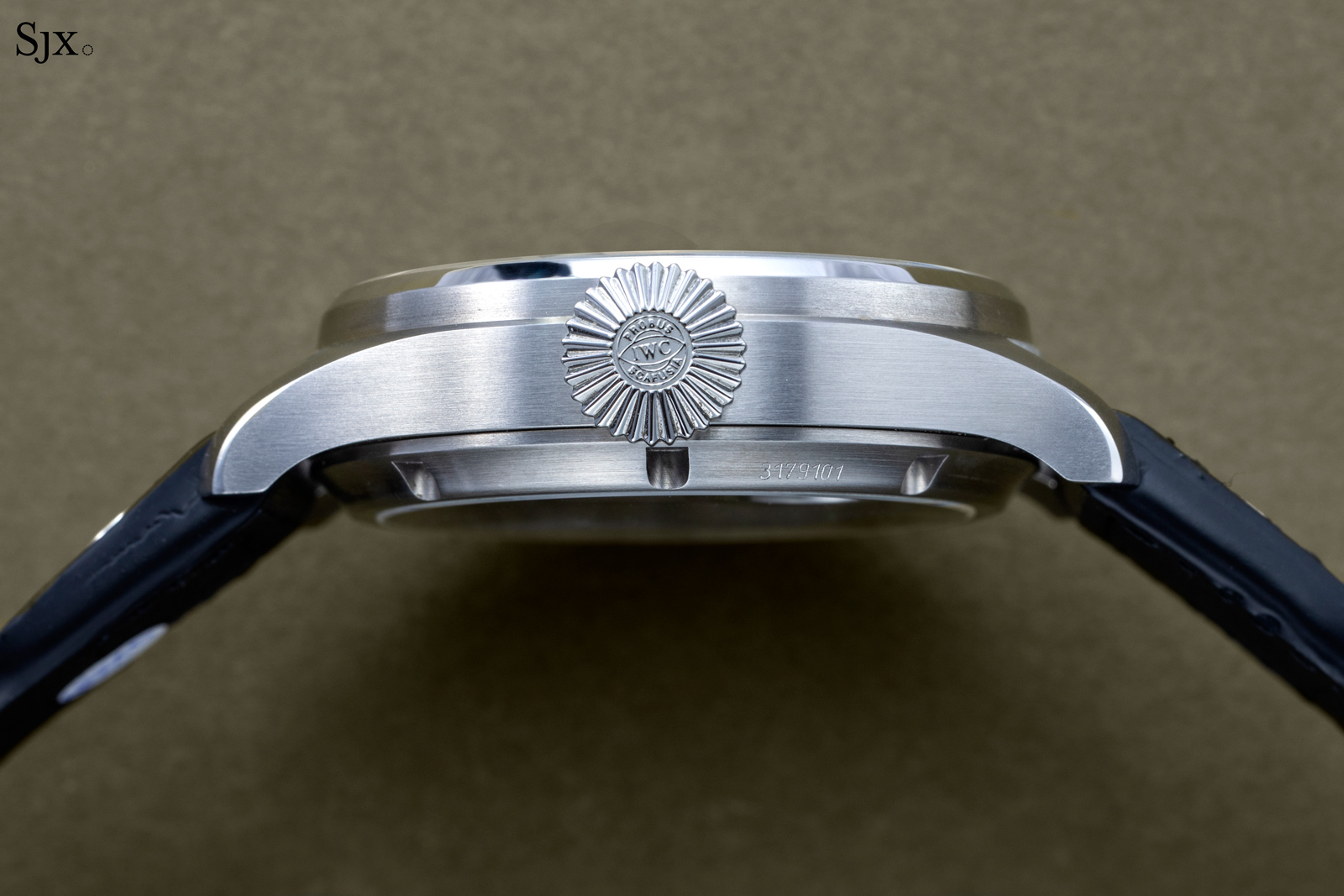
And the dial is also similar to that of the standard ref. 5002, which was modelled on the Baumuster A dial design of the beobachtungsuhr issued to navigators of the Second World War German airforce.
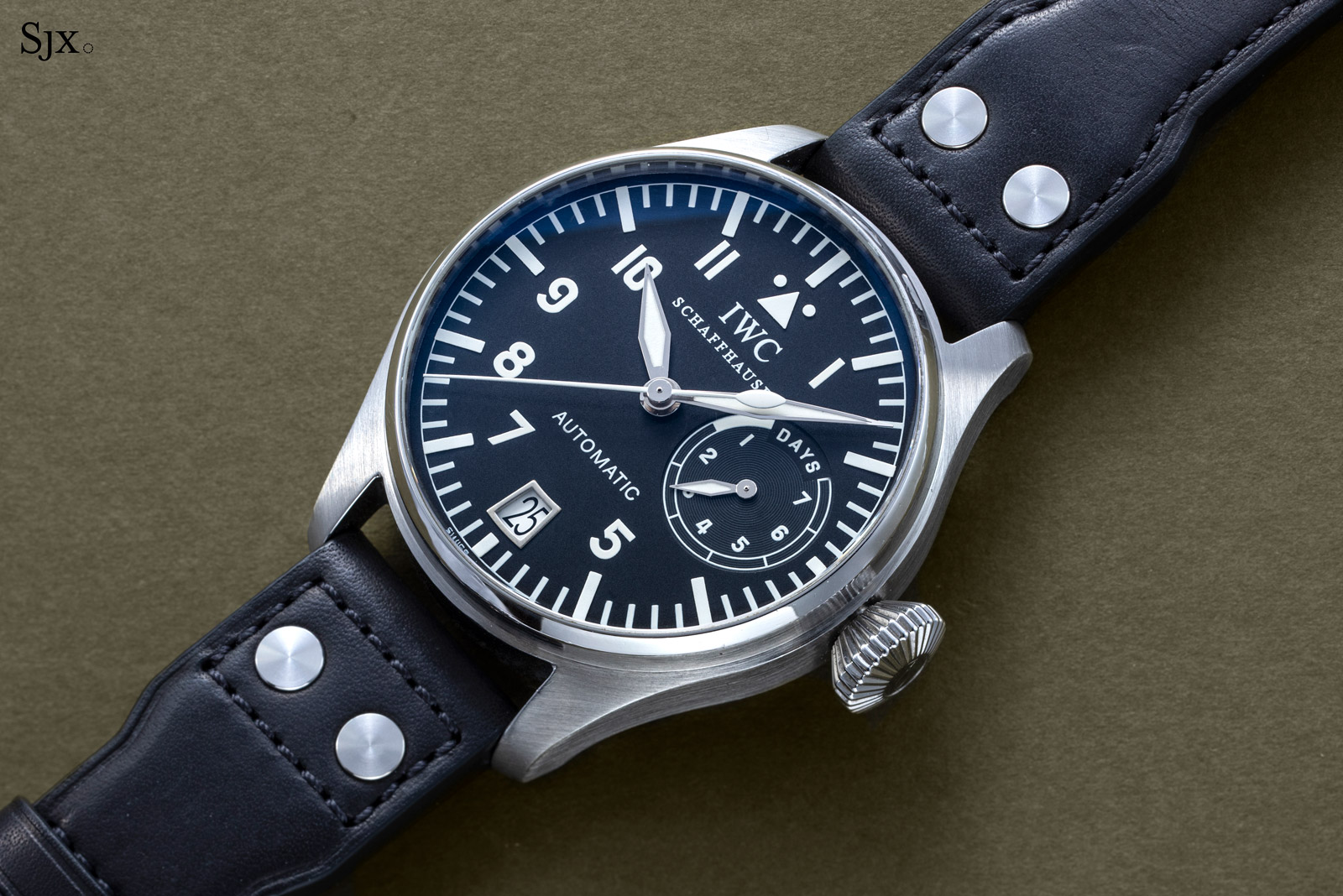
The standard, first-generation Big Pilot ref. 5002
It has long, prominent hour and minute marks that were shortened in later generations of the Big Pilot, along with the triangle and twin dots at 12 o’clock.
But it is slightly fancier with applied hour markers replacing the printed markers of the standard dial. The applied markers echo the dial of the Big Pilot ref. 500202 in platinum, a limited edition of 500 watches launched in 2002.
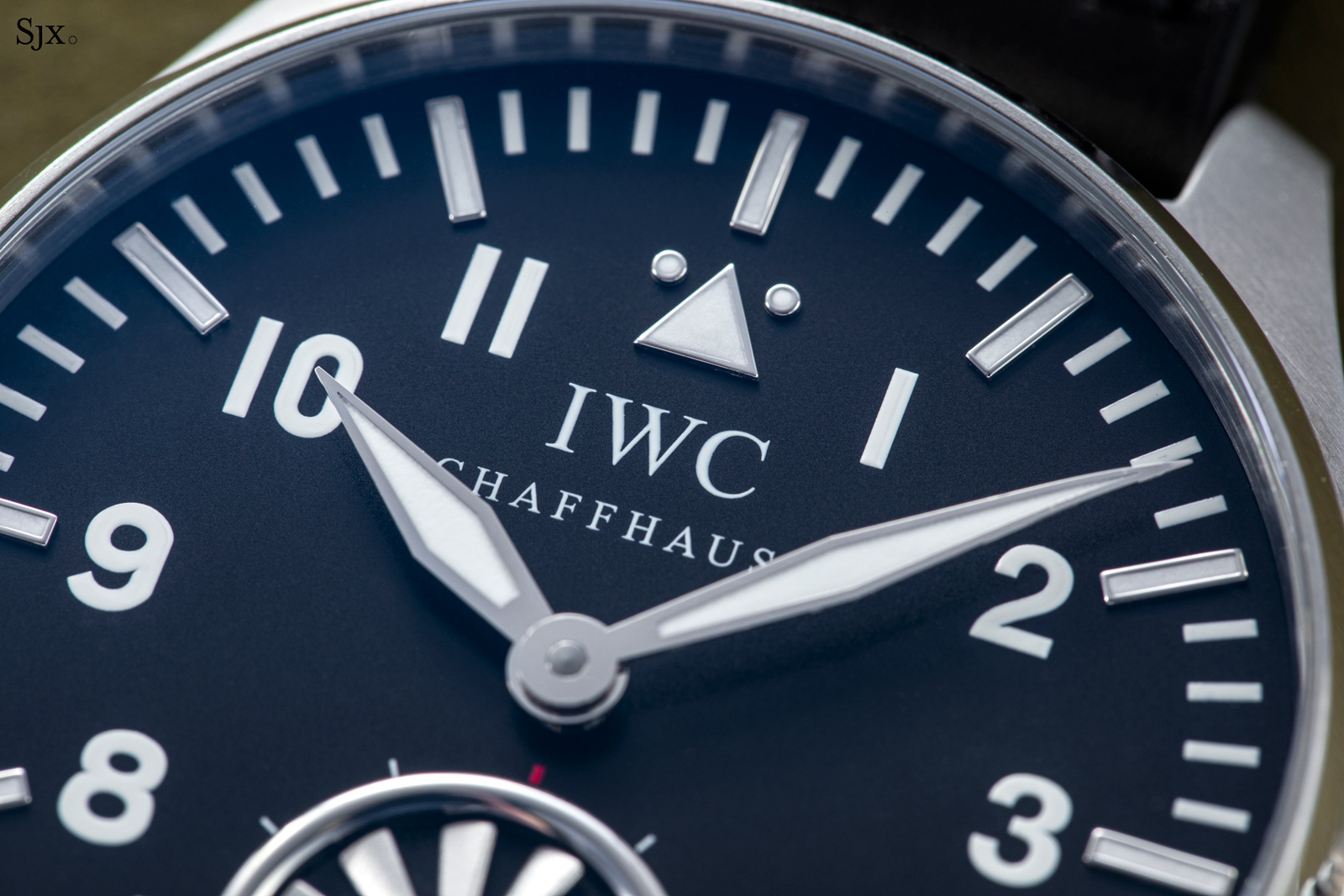
The typography of the hour numerals is also slightly different, with the Markus Bühler edition having a “closed” nine and wider kerning (or space) between the double-digit hours.
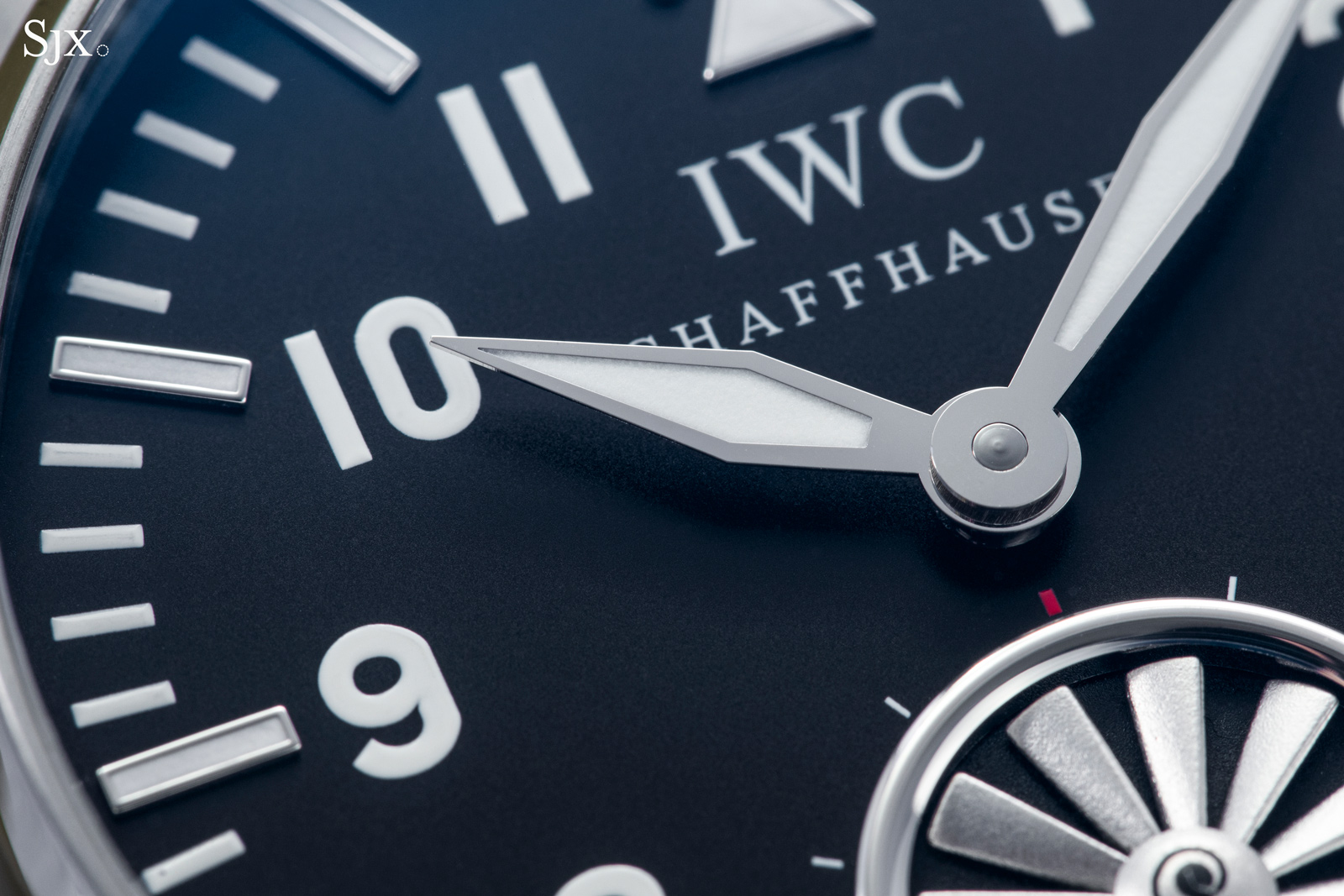
And a prototype
But before the limited edition was launched in 2008, there was the question of the dial – Mr Plange evidently penned several dial designs for the watch though only one version saw the light of day.
An intriguing backstory relating to the design comes from Tracy Hino, a longtime IWC collector who lives in Hawaii. Better known by his pen name “Kokoro” on the IWC Forum, Mr Hino acquired the prototype “turbine” dial about five years ago. It’s almost identical to the dial found on the production version, save for “Jet Age” over the seconds.
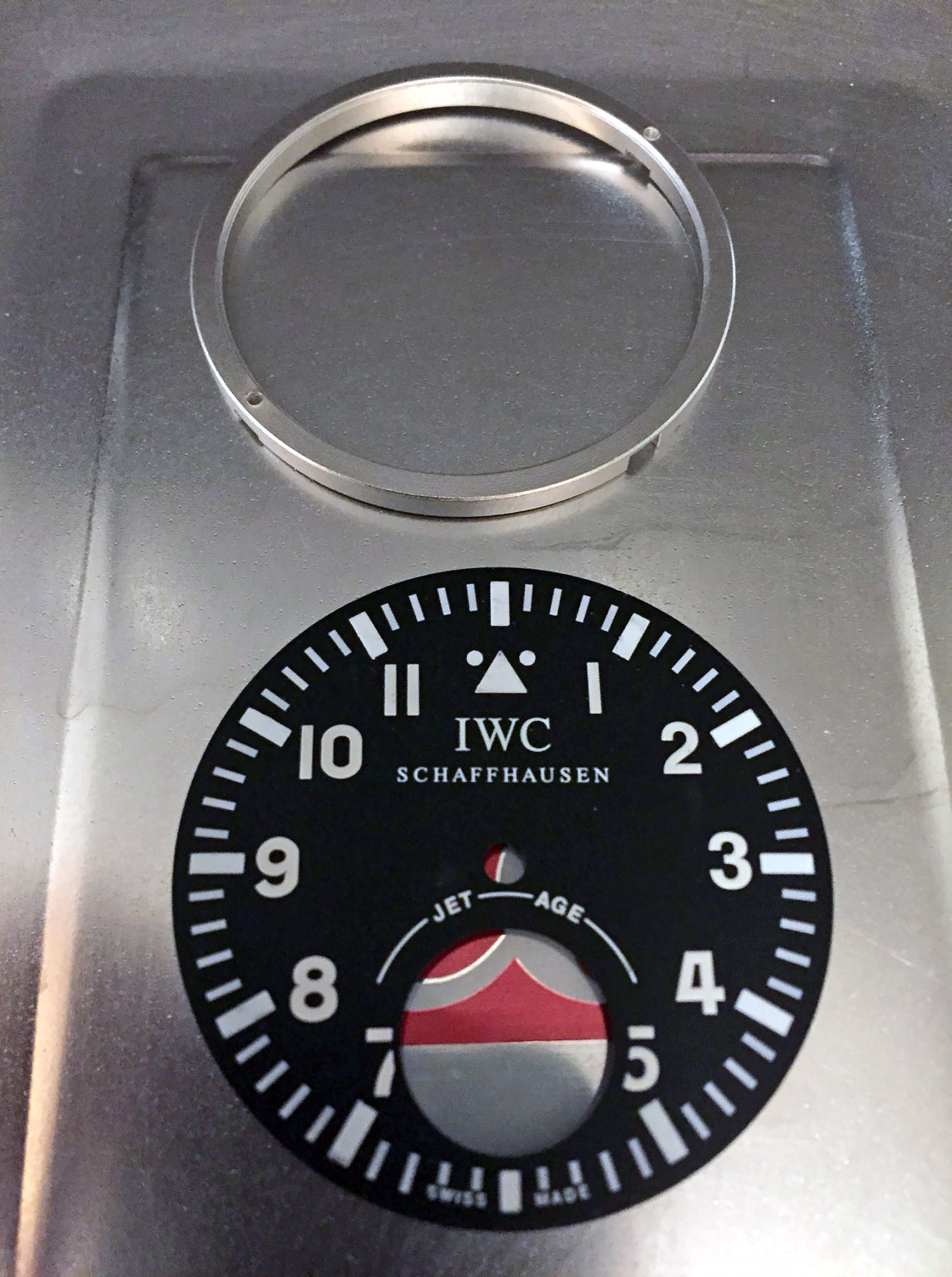
The prototype “Jet Age” dial
“In 2017 I attended a 5002 get-together in Hong Kong with [many old friends] and Markus Bühler,” recounts Mr Hino, “Markus confirmed the authenticity of the dial by inspecting it in person. He stated that George Kern did not like the ‘Jet Age’ aspect and wanted something more traditional.”
And when reached via IWC Museum curator David Seyffer recently, Mr Bühler confirmed the same. According to Mr Seyffer, “I asked Markus yesterday about the dial and he told me it was the first prototype.”
And now the prototype dial has be cased up, albeit by Mr Hino himself.
“When the pandemic struck, we had a lockdown order in Hawaii,” says Mr Hino, “I was so bored that I actually mounted the dial on a Unitas movement and put it in a case – only the dial in the picture is real.”
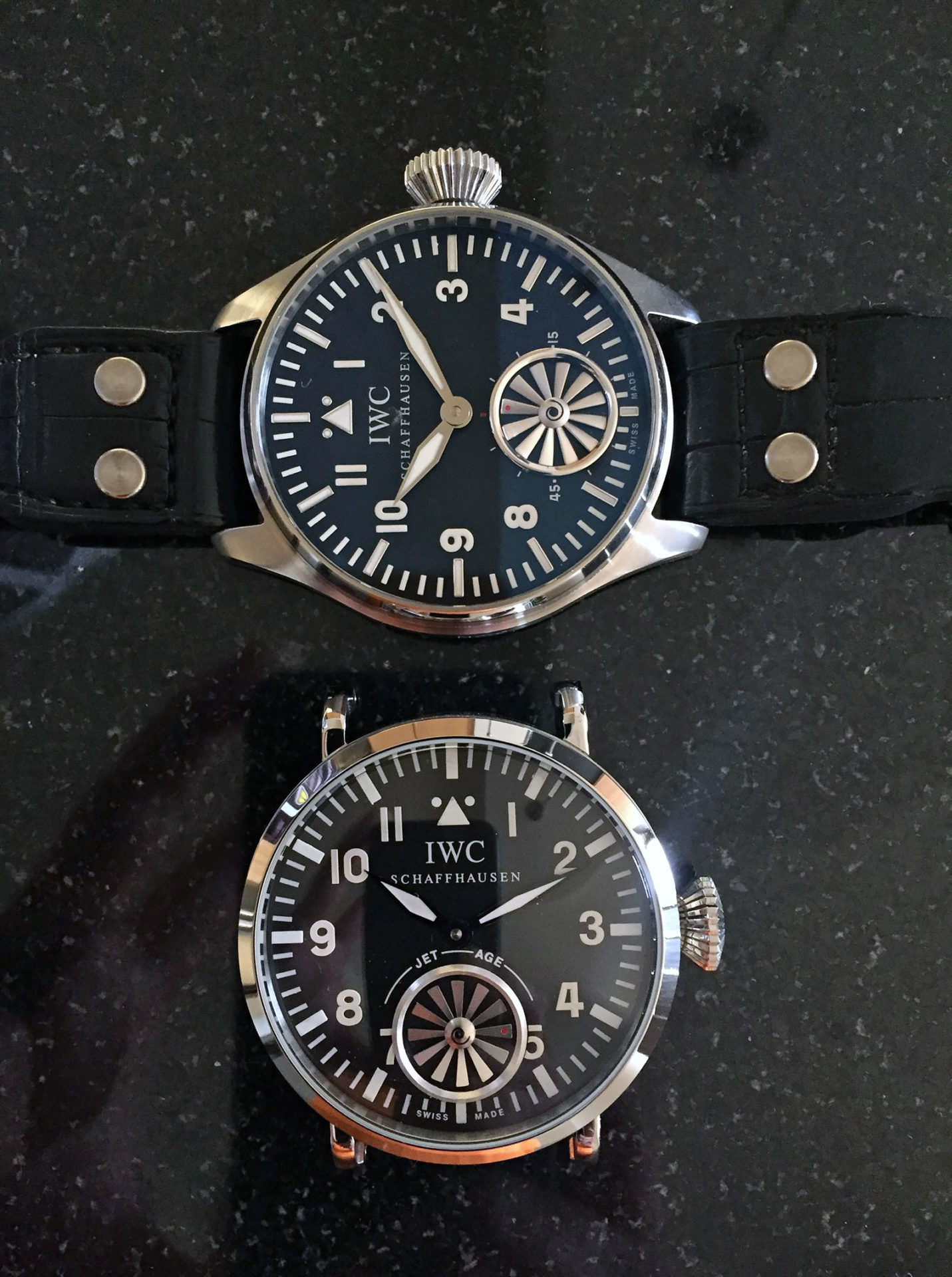
The Big Pilot Markus Bühler (above) with the prototype dial in a generic case. Photo – Tracy Hino
And the final bit of trivia about the Big Pilot “Turbine”. The IWC Museum has the final watch of the series “No. 12” – though legend has it the watch was misplaced before being later rediscovered – while Mr Bühler himself retained the the penultimate example.
His watch “No. 11”, however, is unique: the seconds “turbine” is missing the tiny whirlwind emblem found on all other examples of the model.
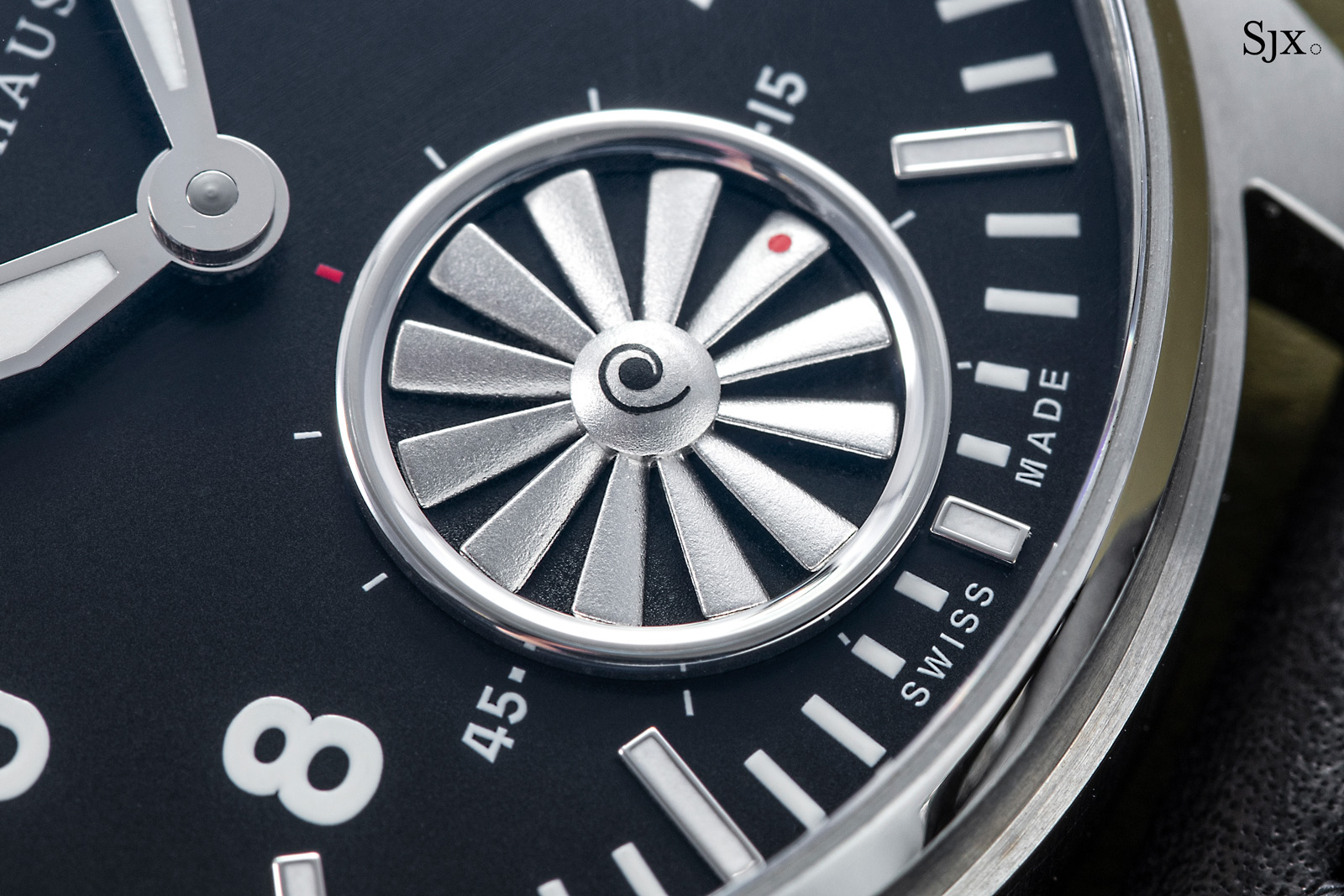
Key Facts
IWC Big Pilot’s Watch Edition Markus Bühler
Ref. IW5003
Diameter: 46.2 mm
Height: 15.8 mm
Material: Stainless steel
Crystal: Sapphire
Water resistance: 30 m
Movement: Cal. 64900
Functions: Hours, minutes, and seconds
Frequency: 18,000 beats per hour (2.5 Hz)
Winding: Hand-wind
Power reserve: 46 hours
Strap: Leather with rivets
Limited edition: 12 watches produced in 2008
For more, visit IWC.com.
Addition October 30, 2021: The dial was designed by Gerd Plange.
Back to top.
